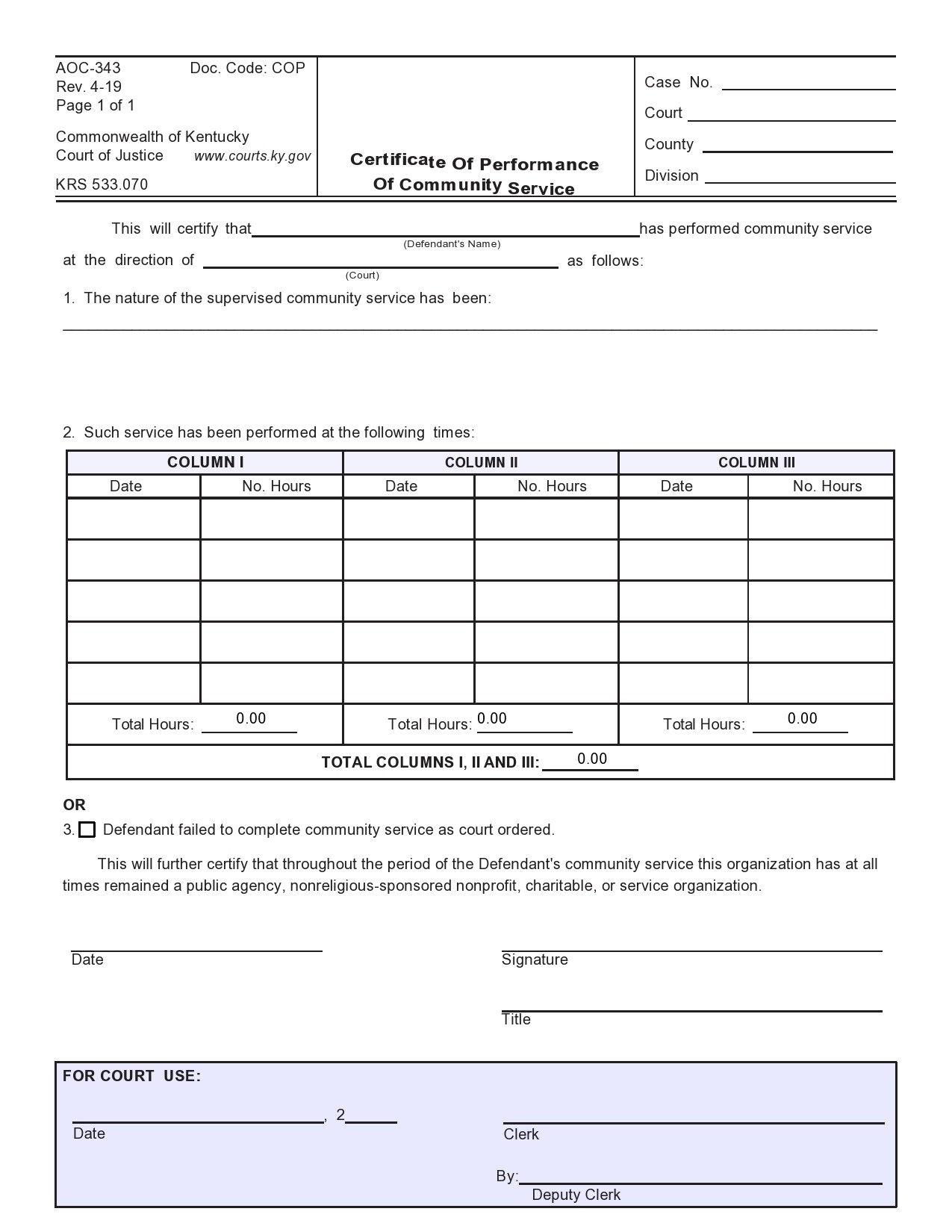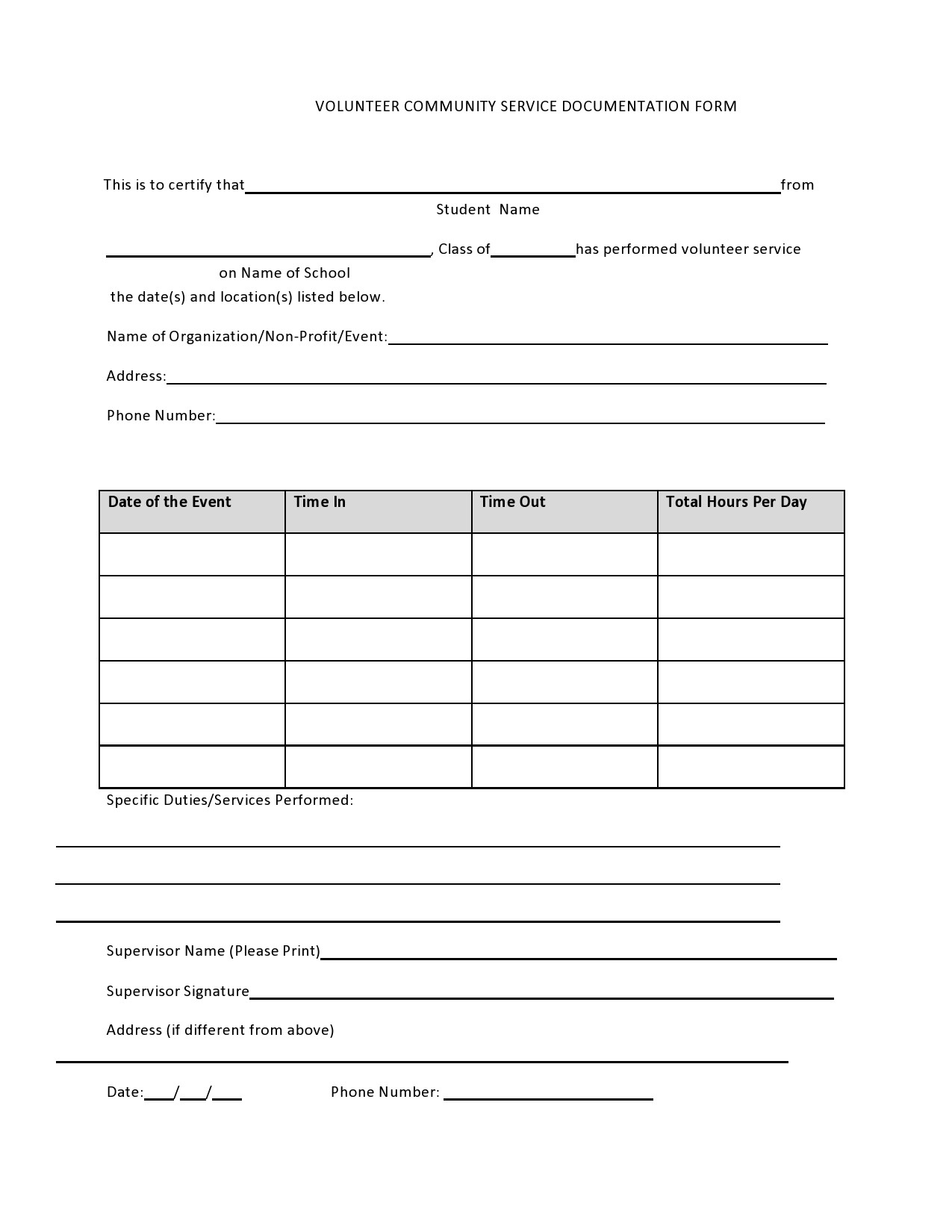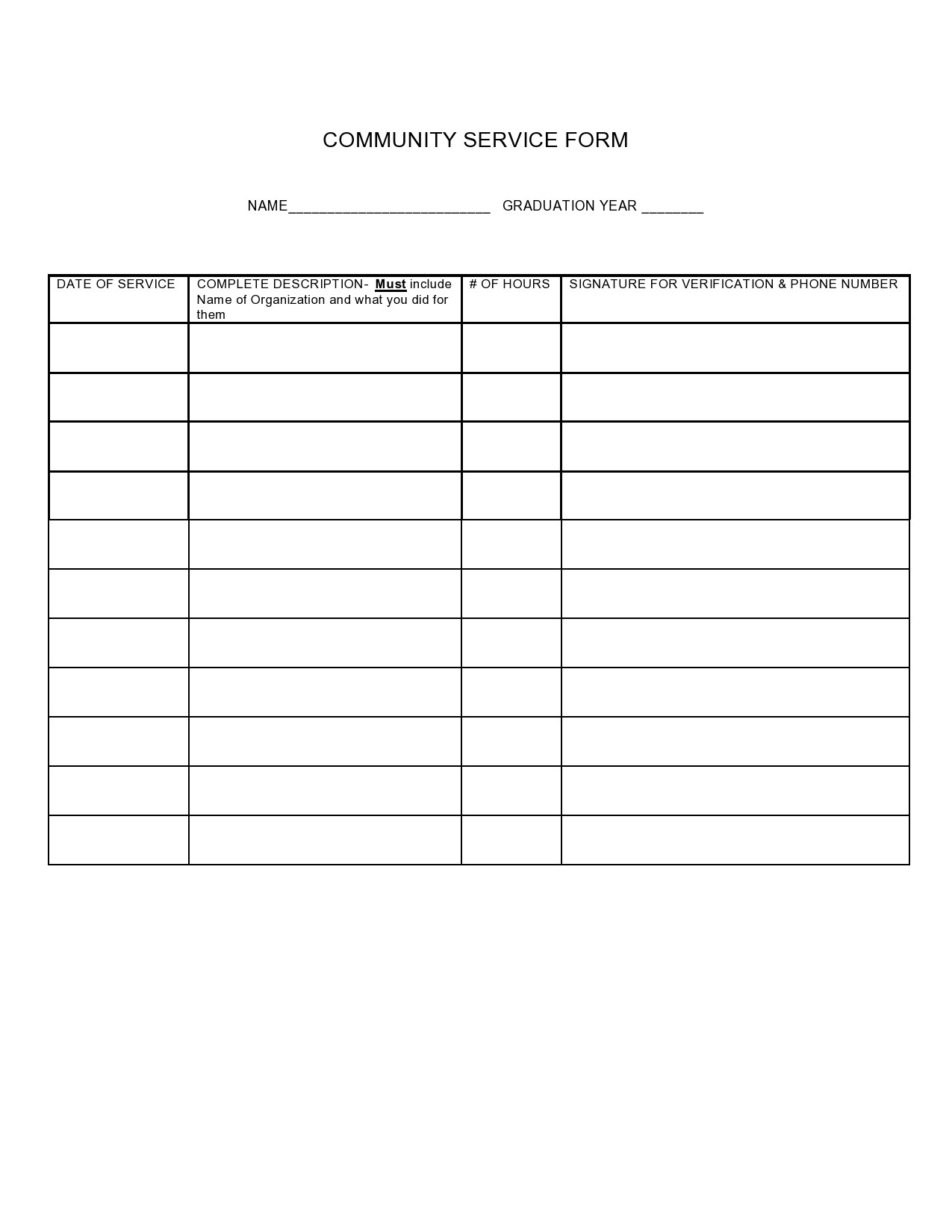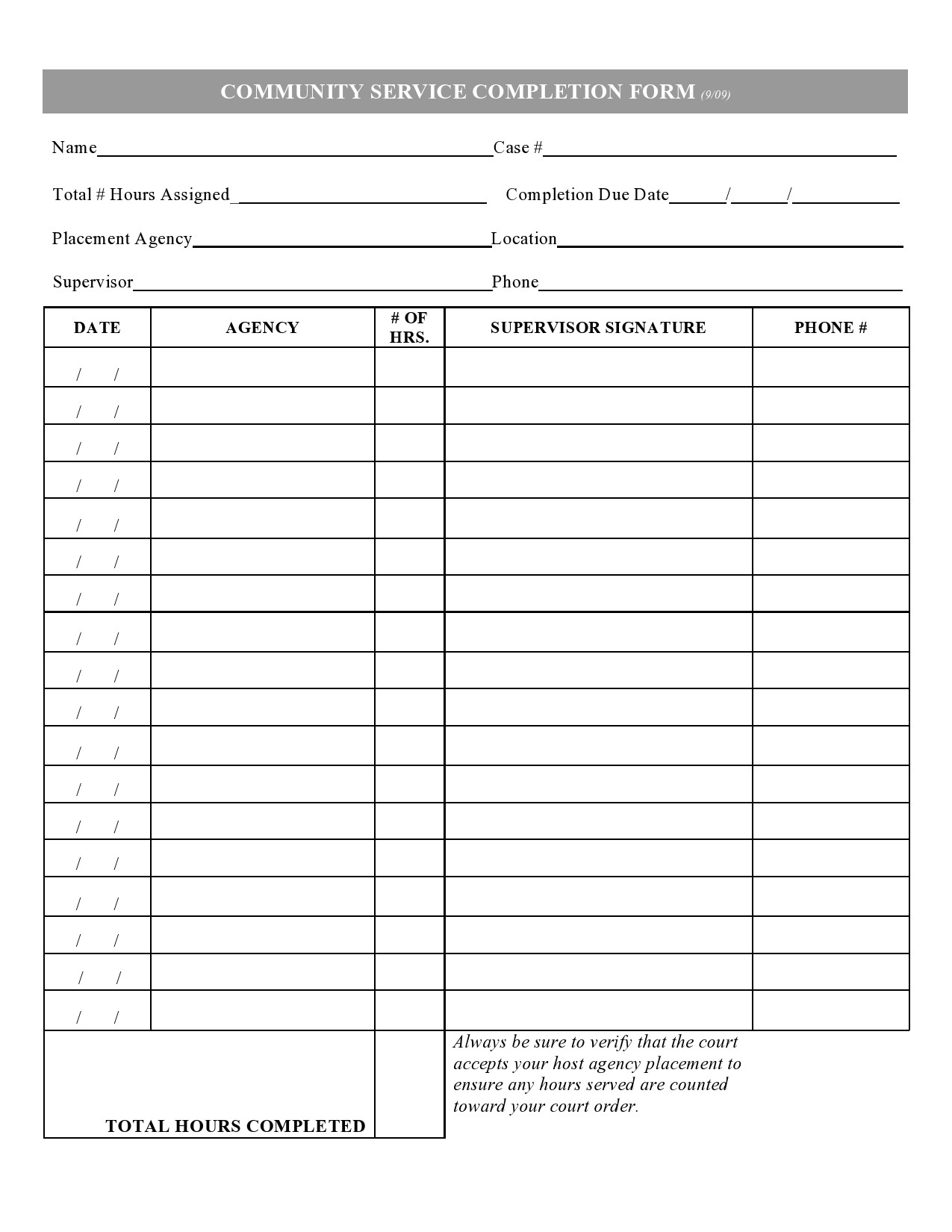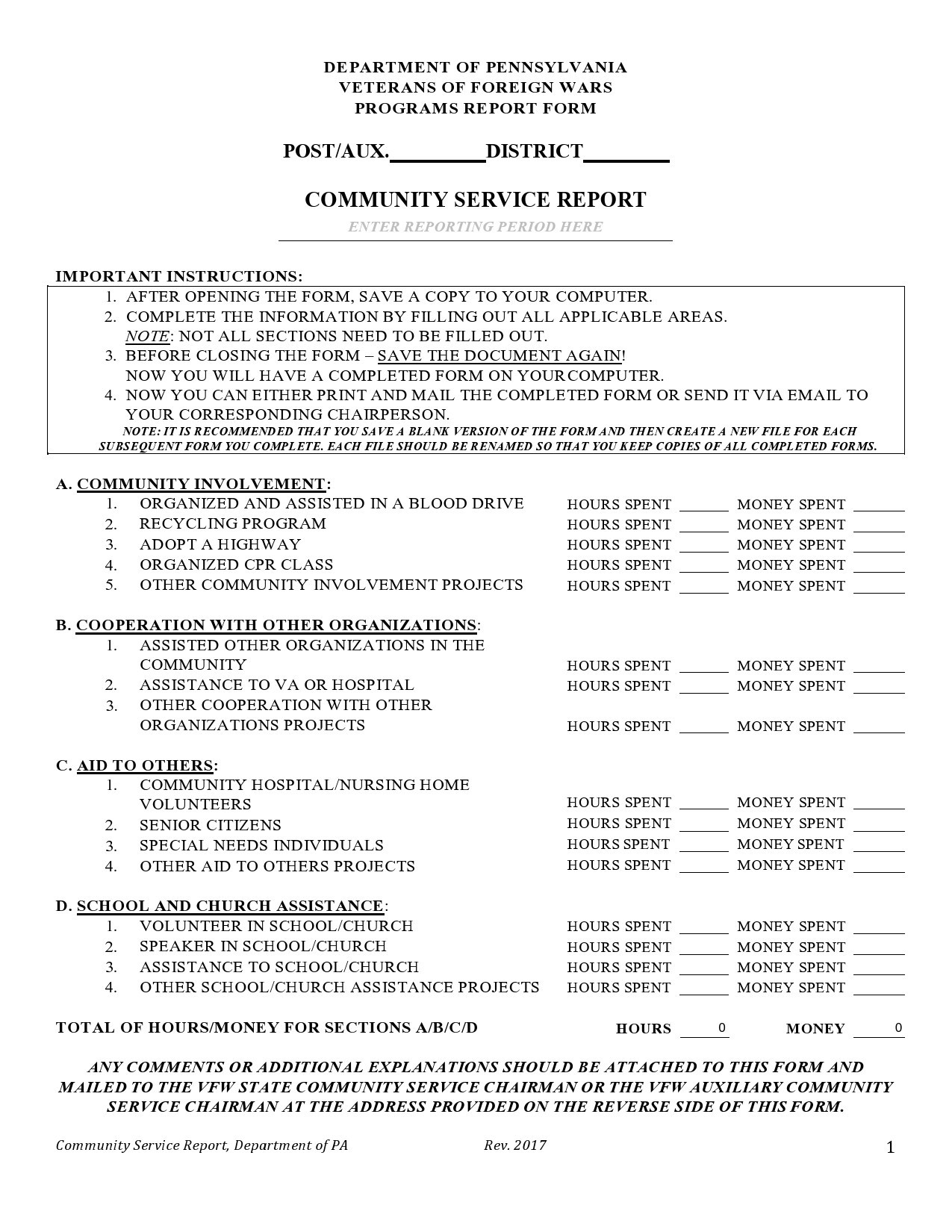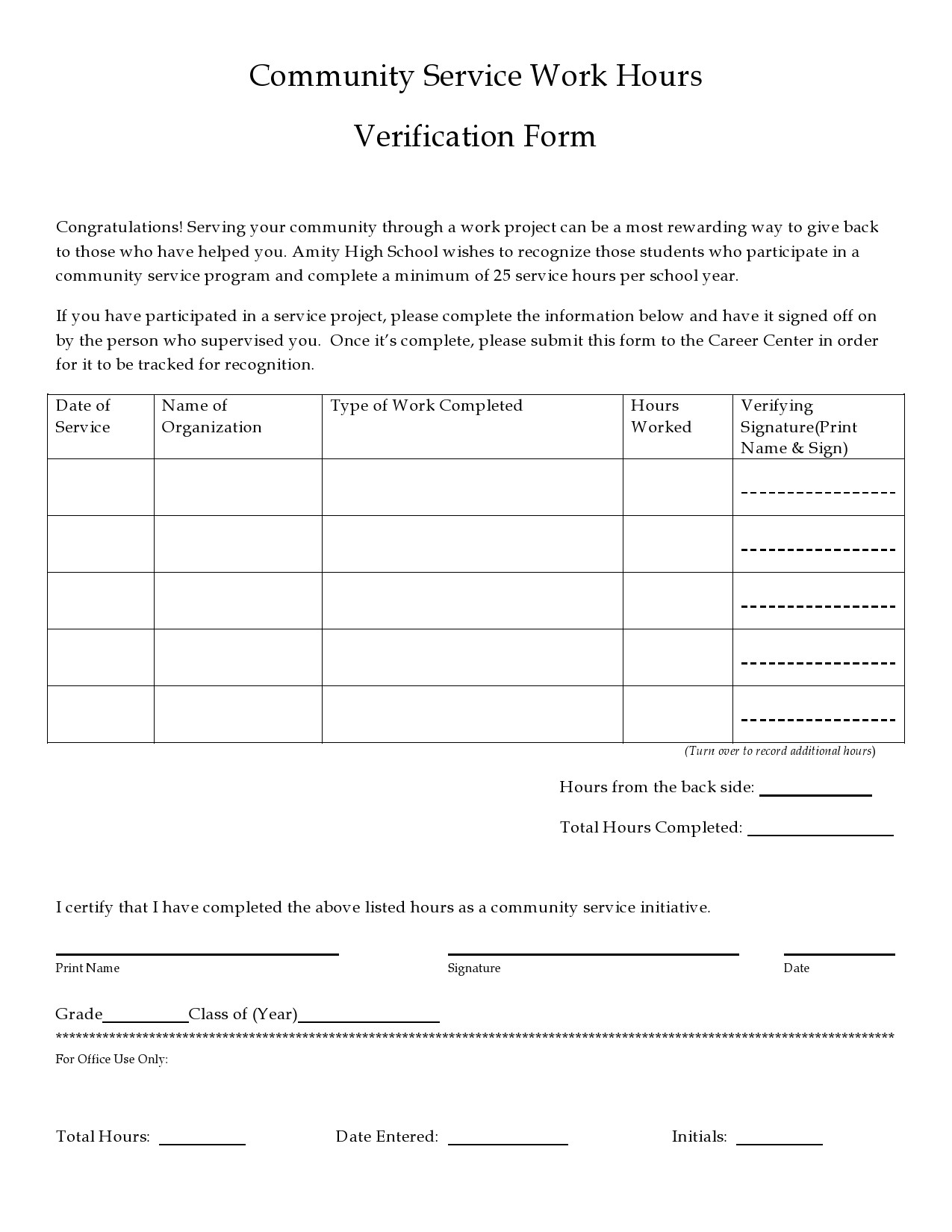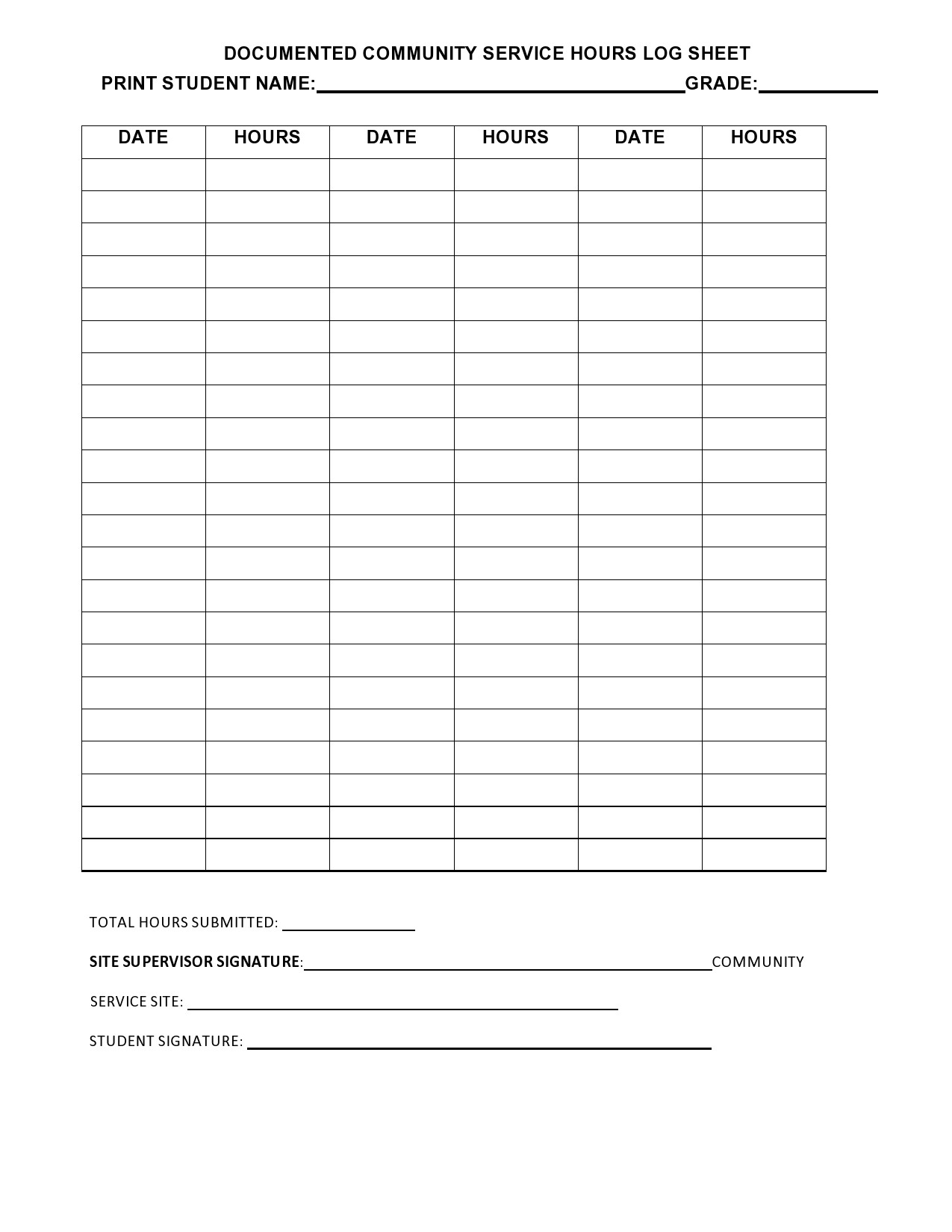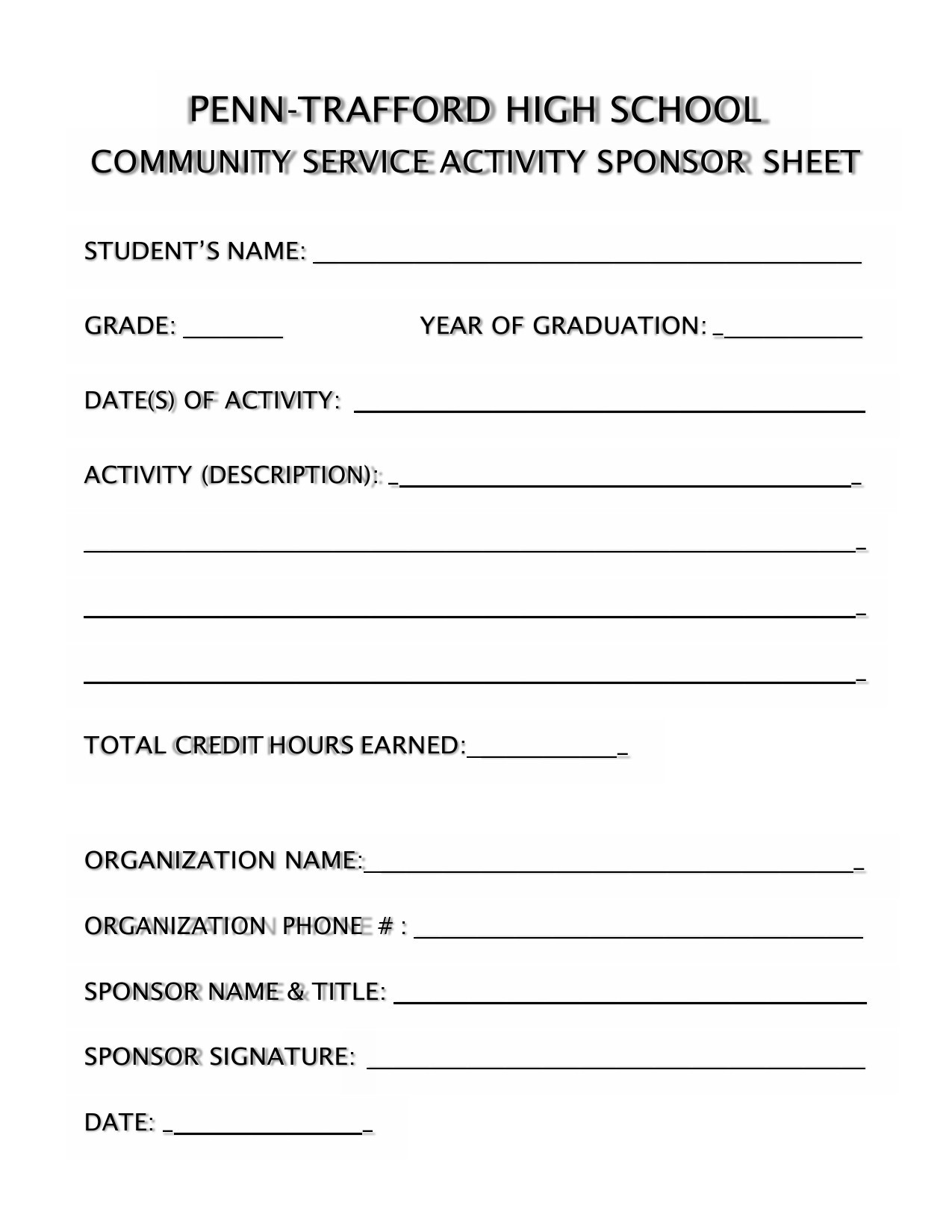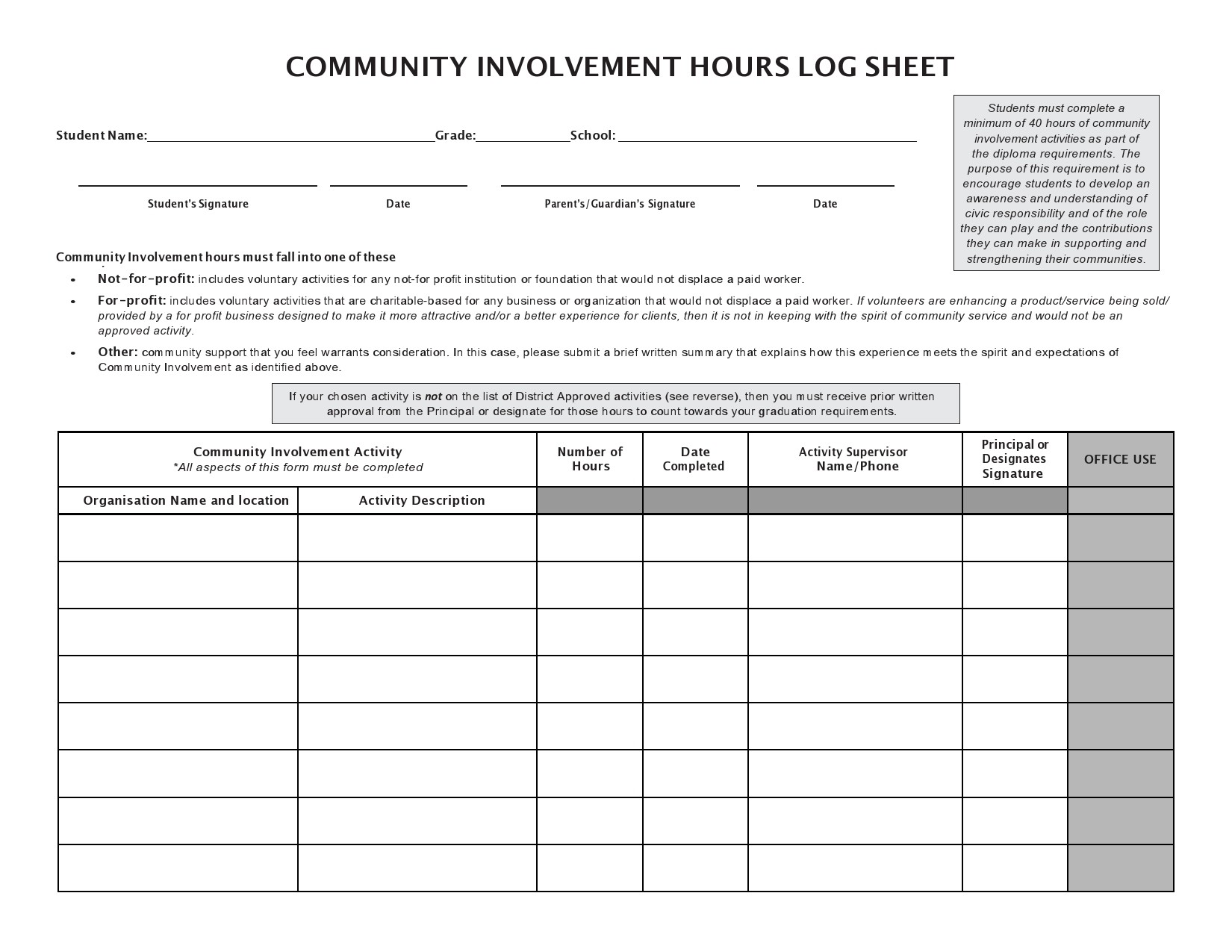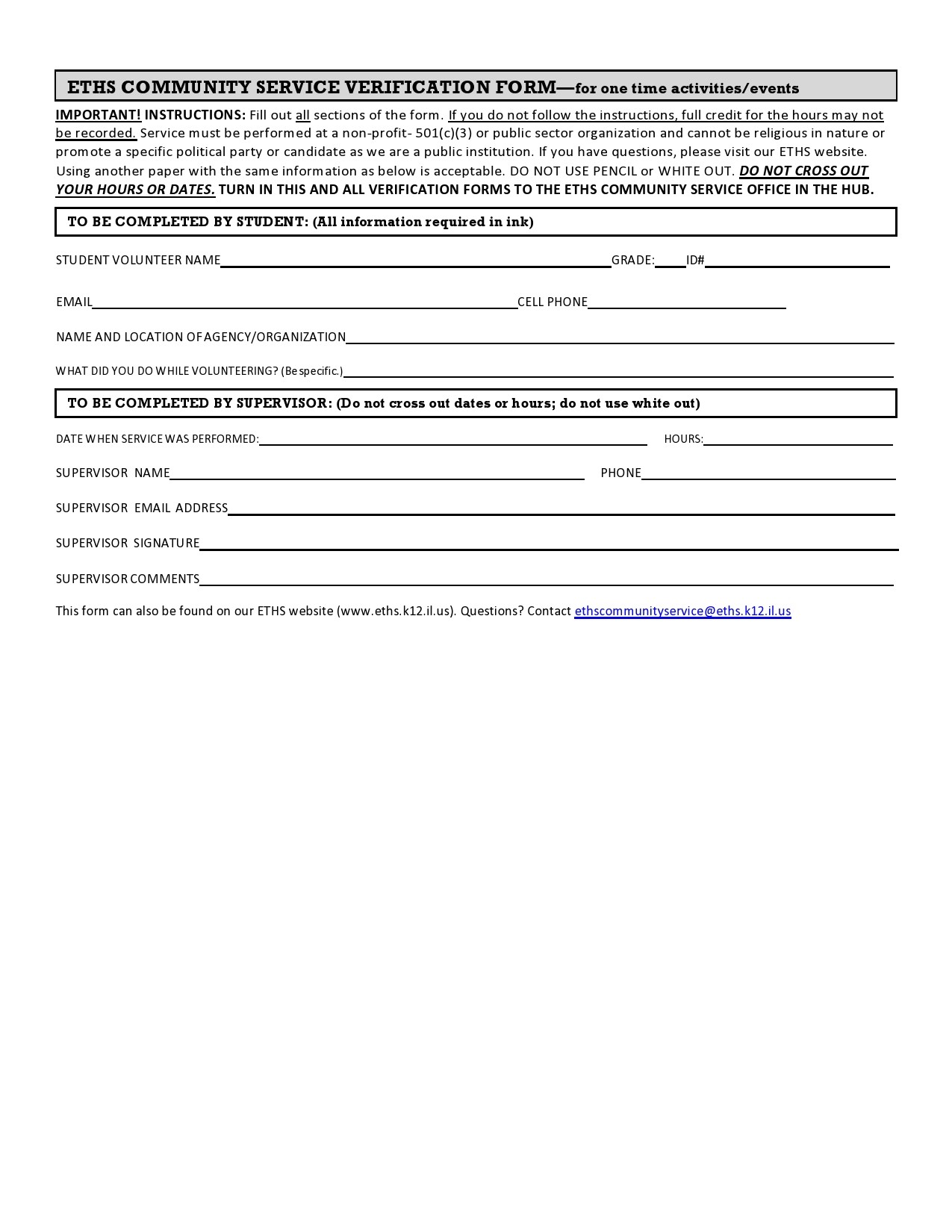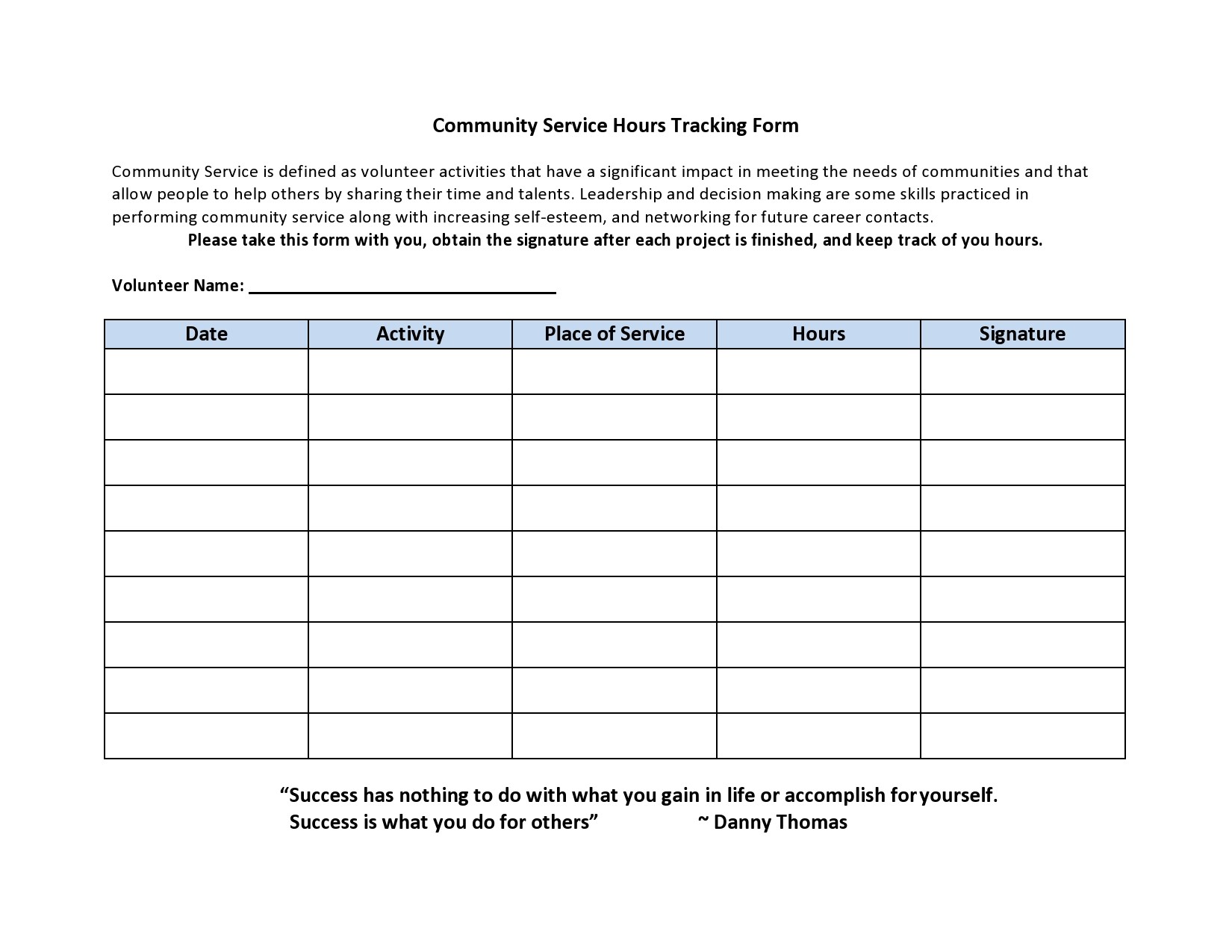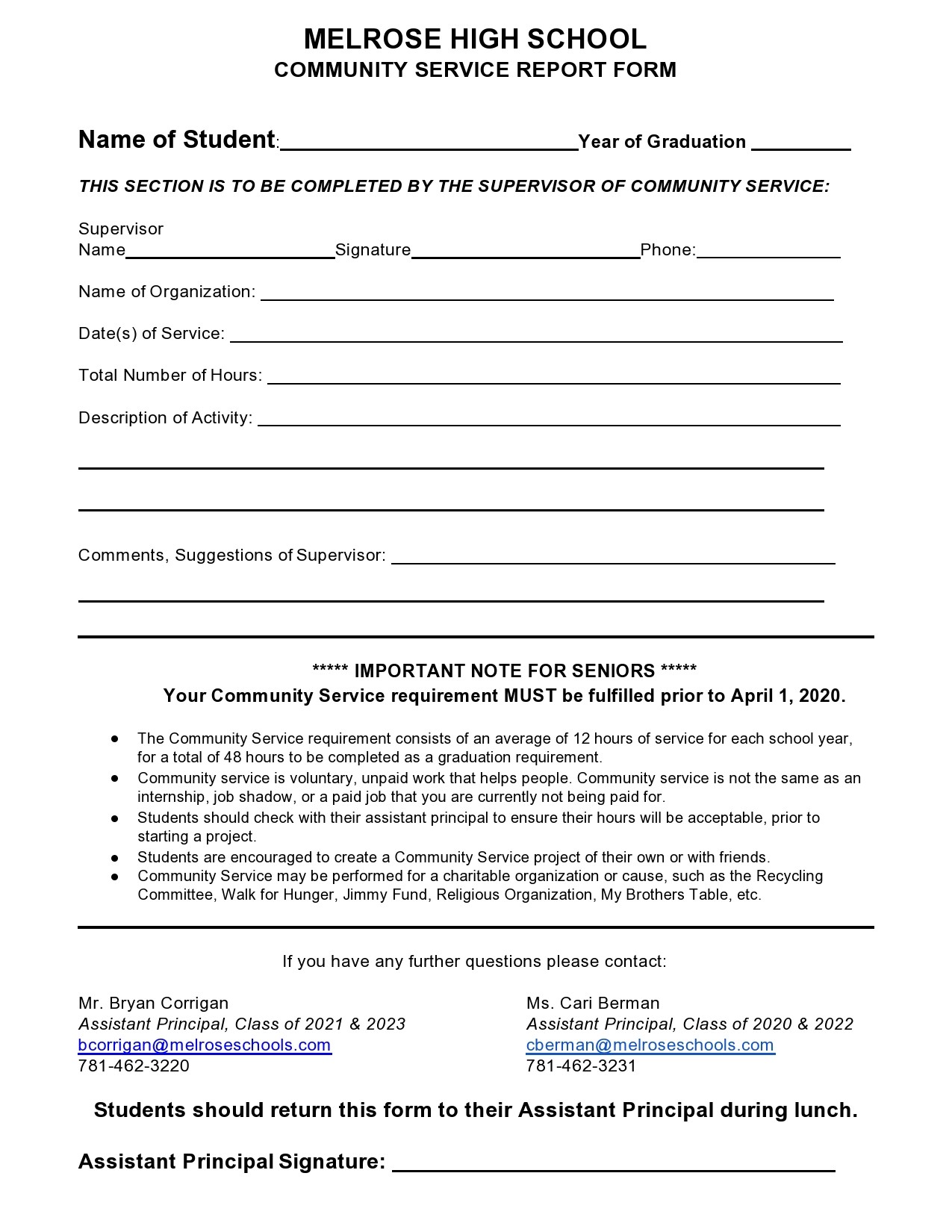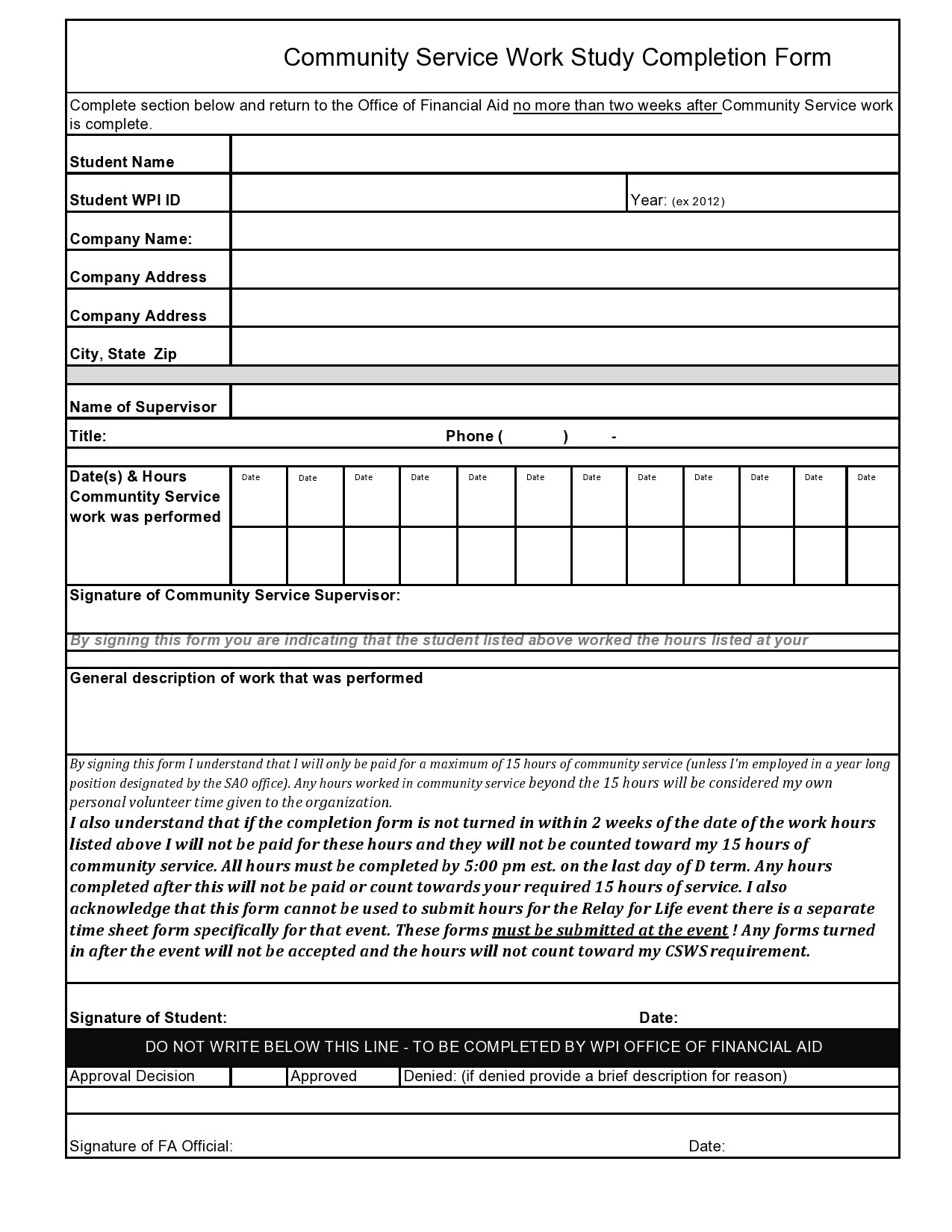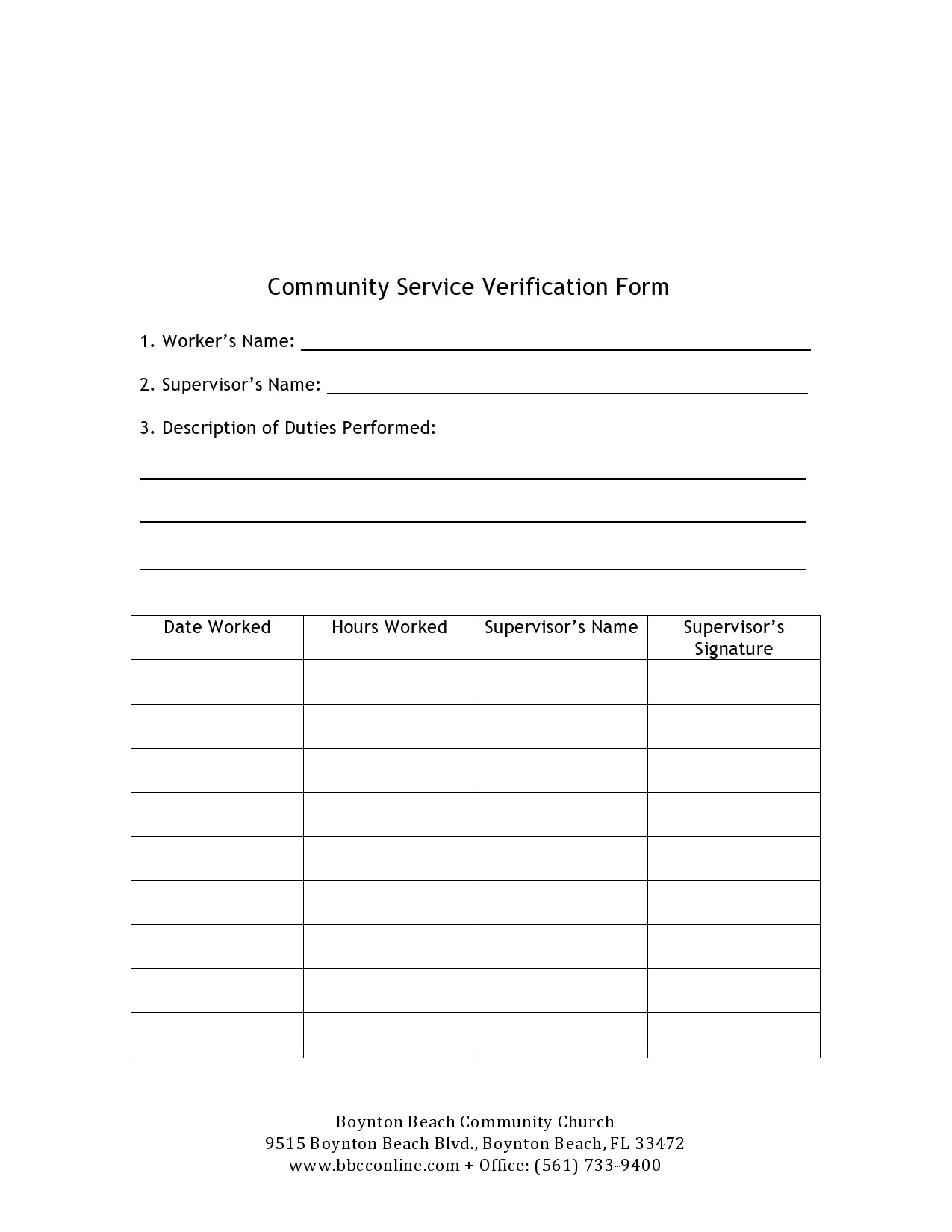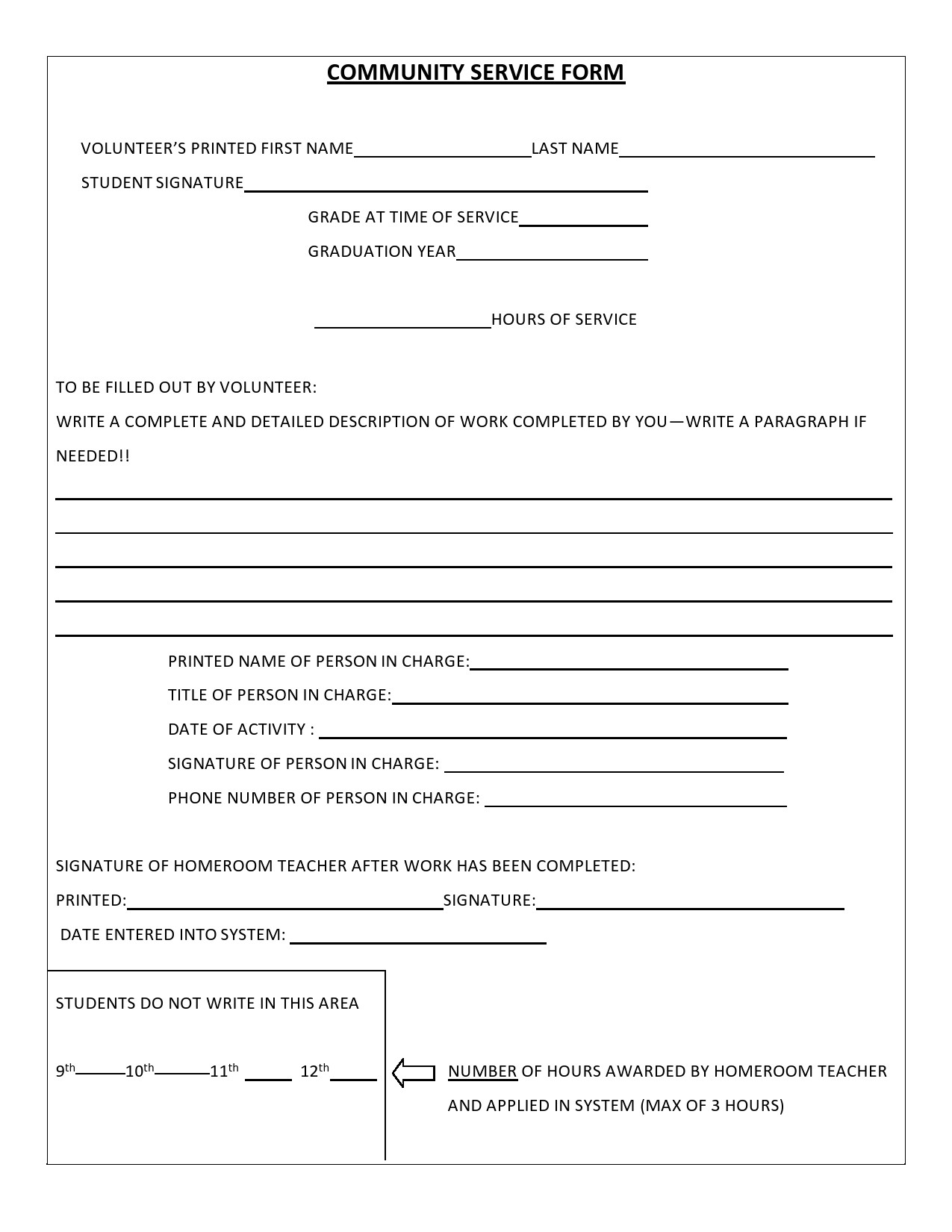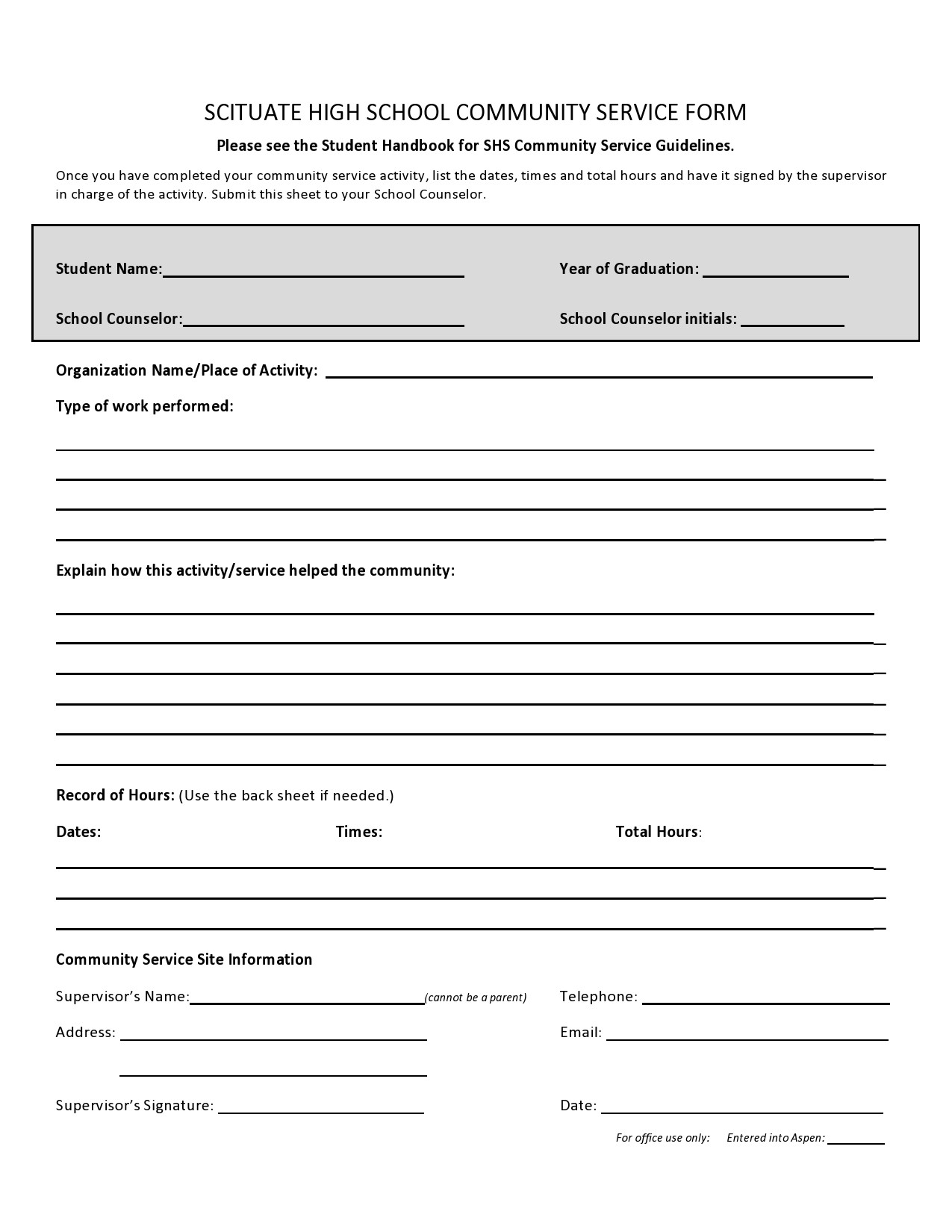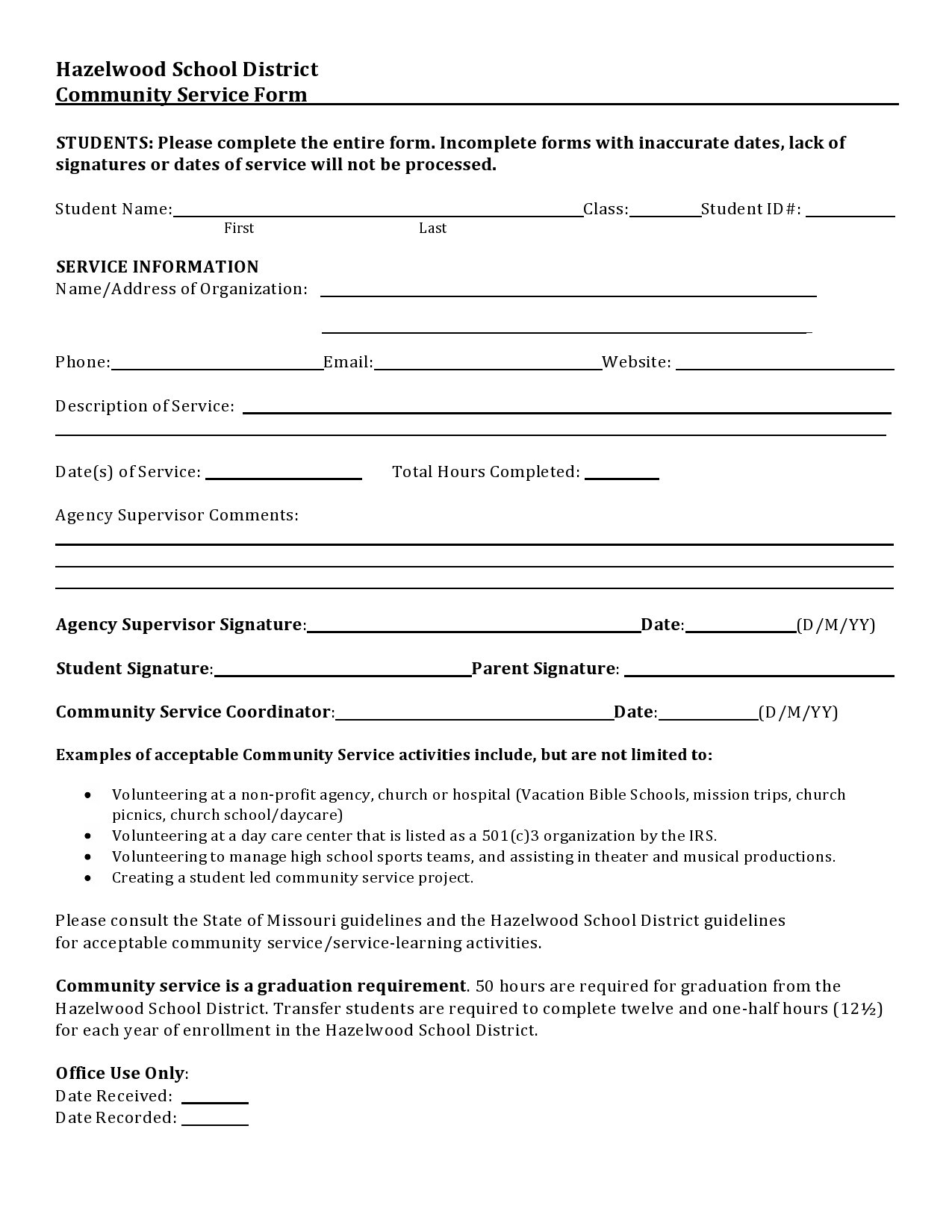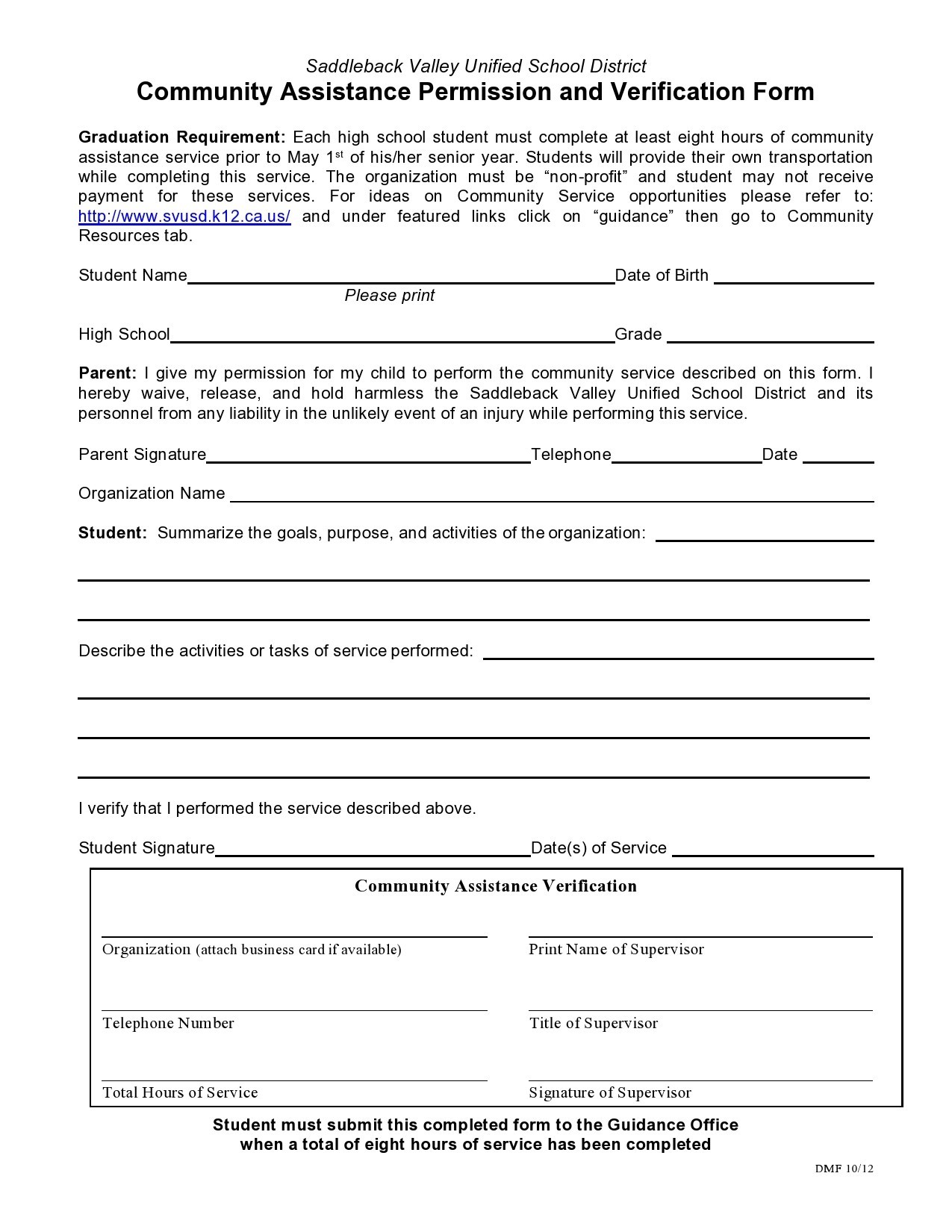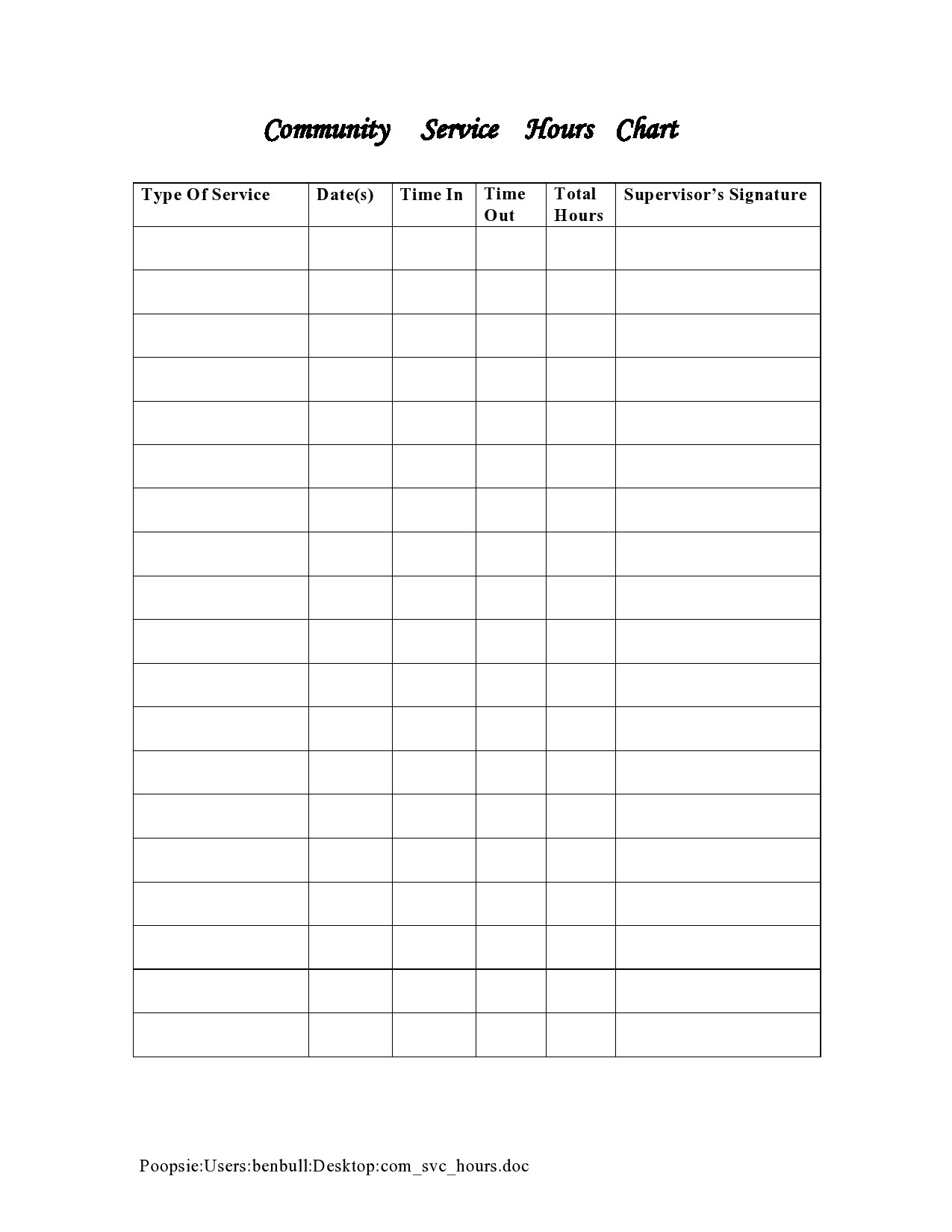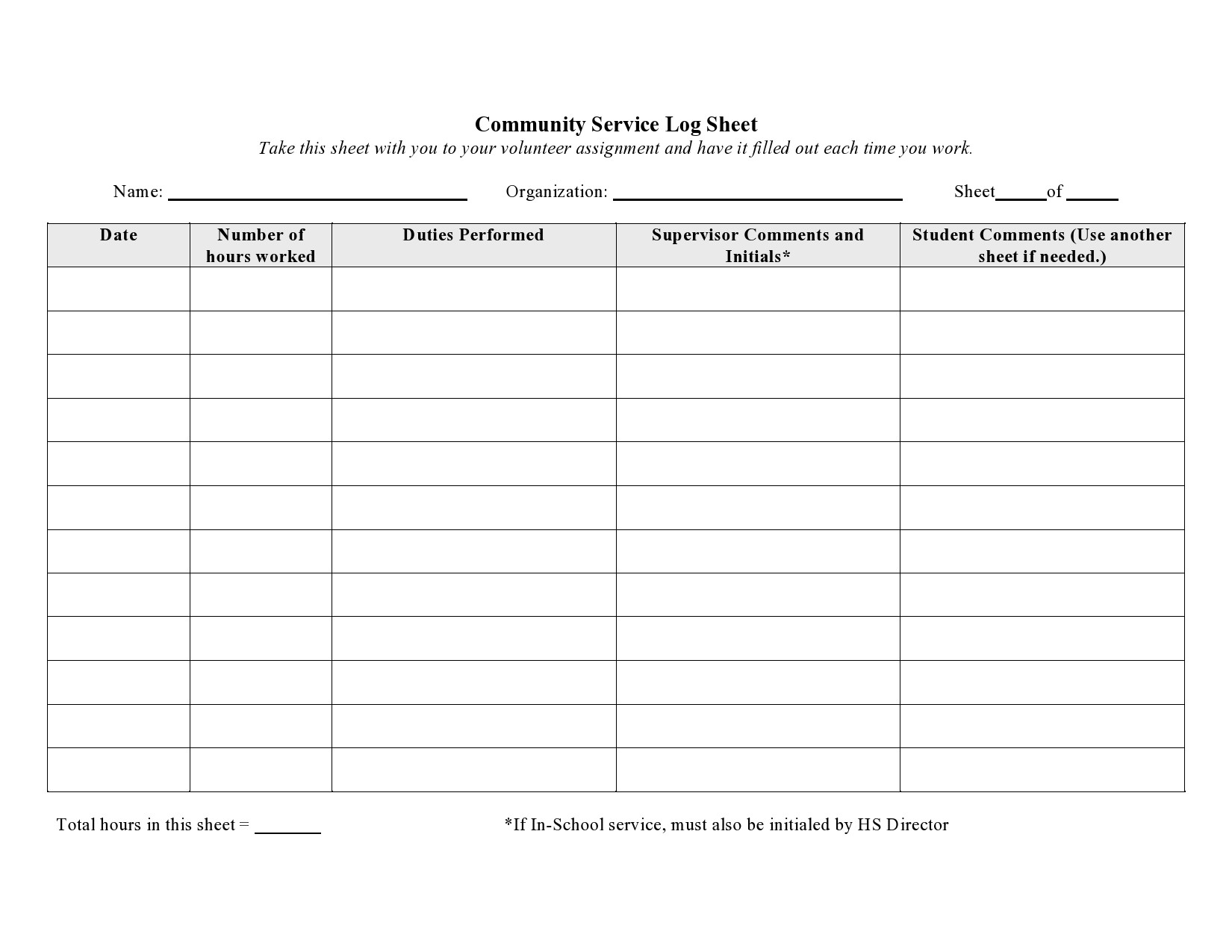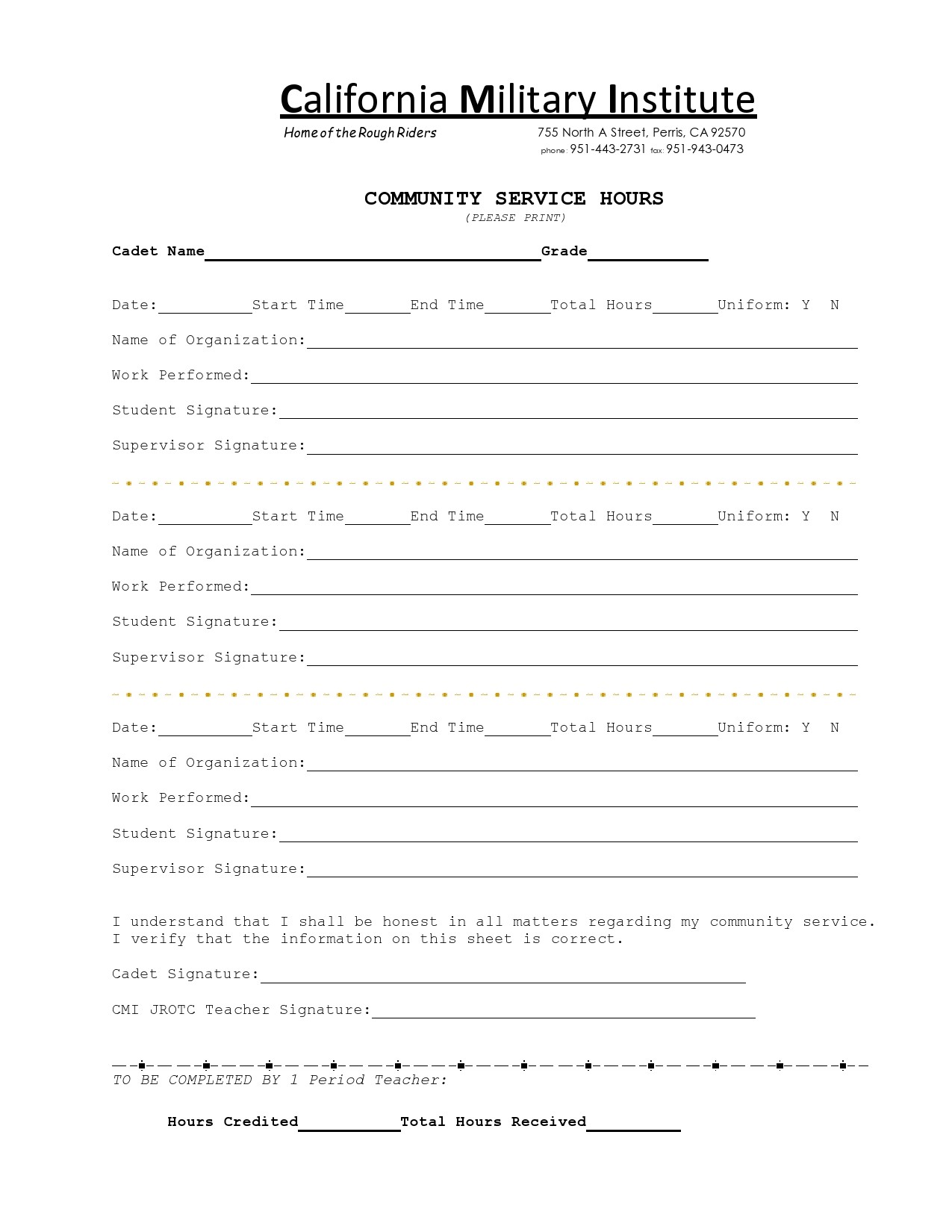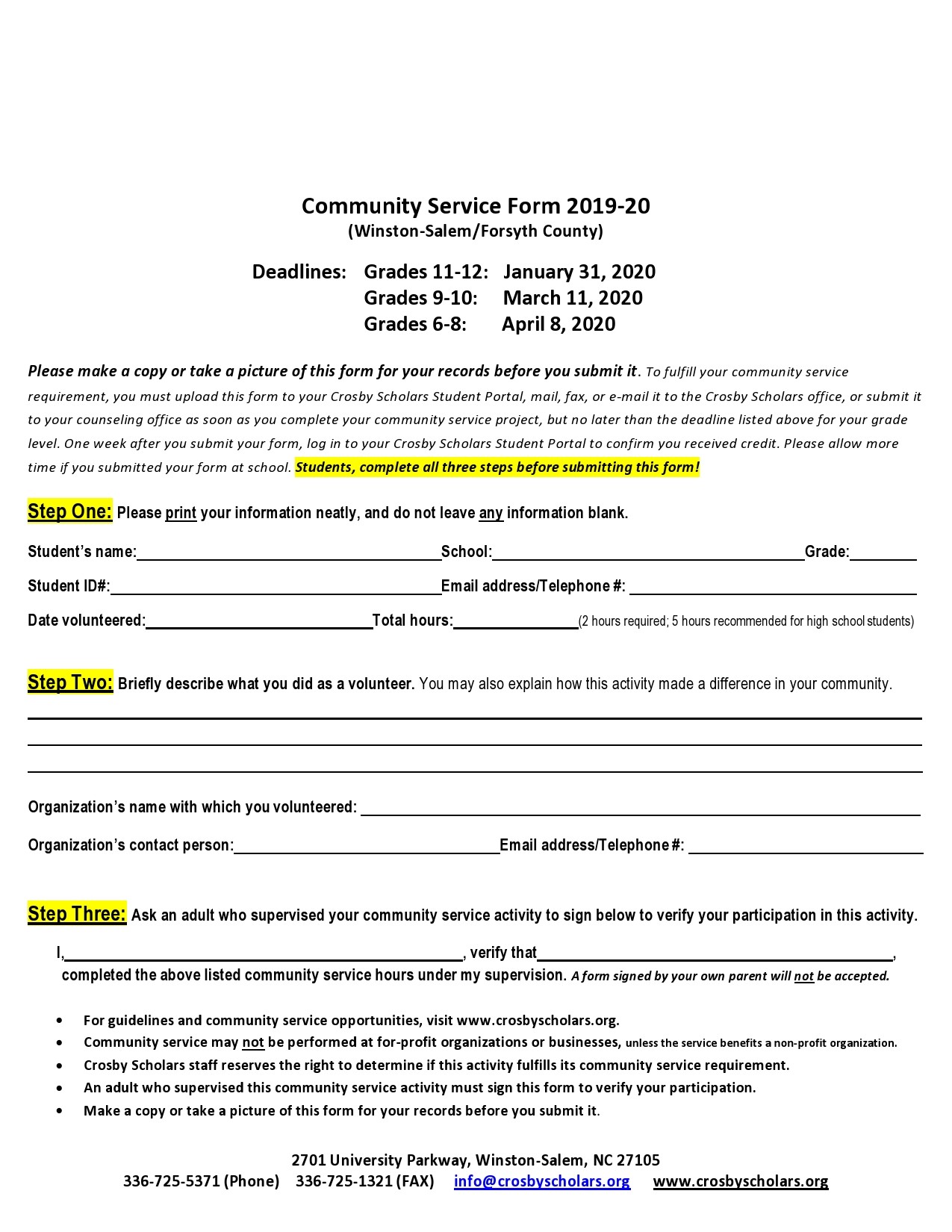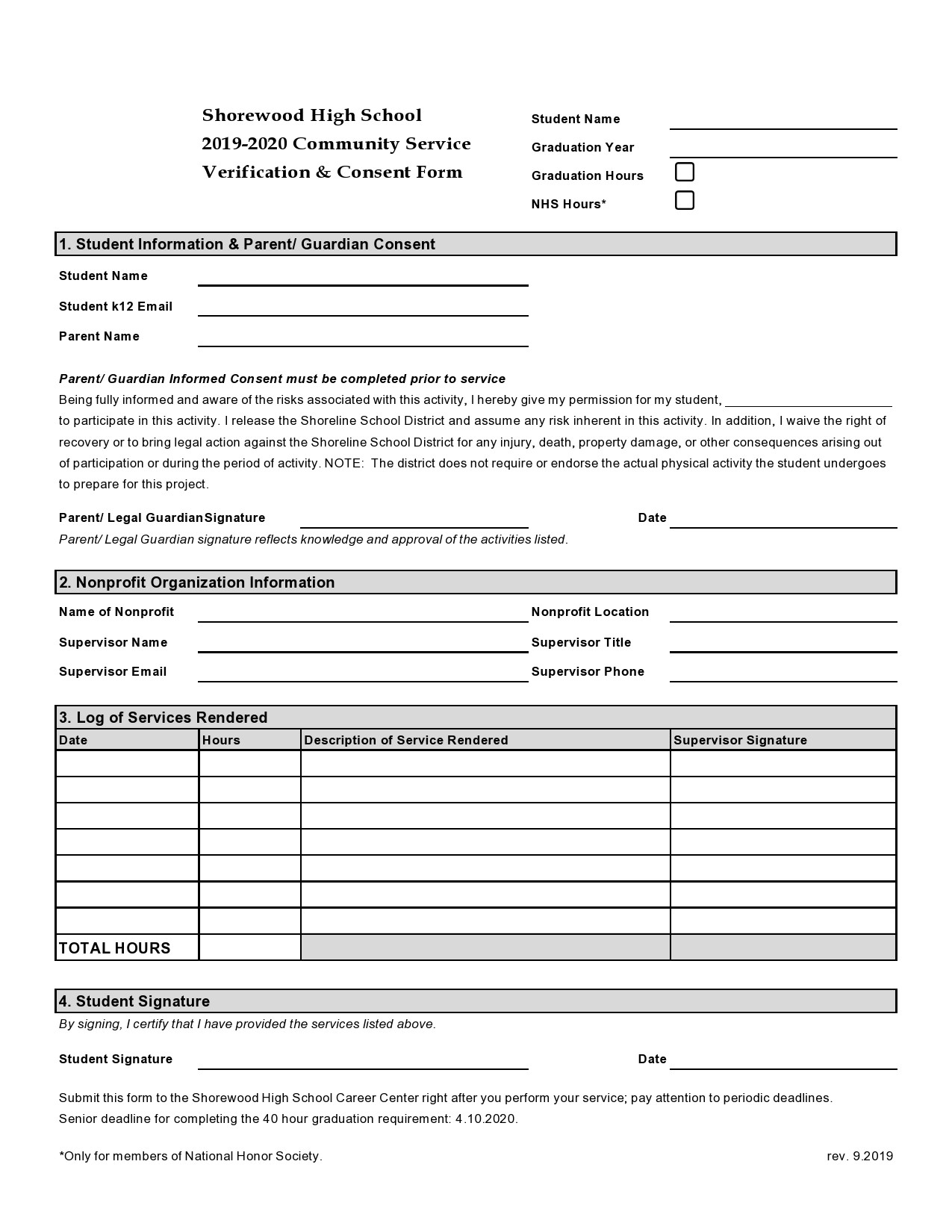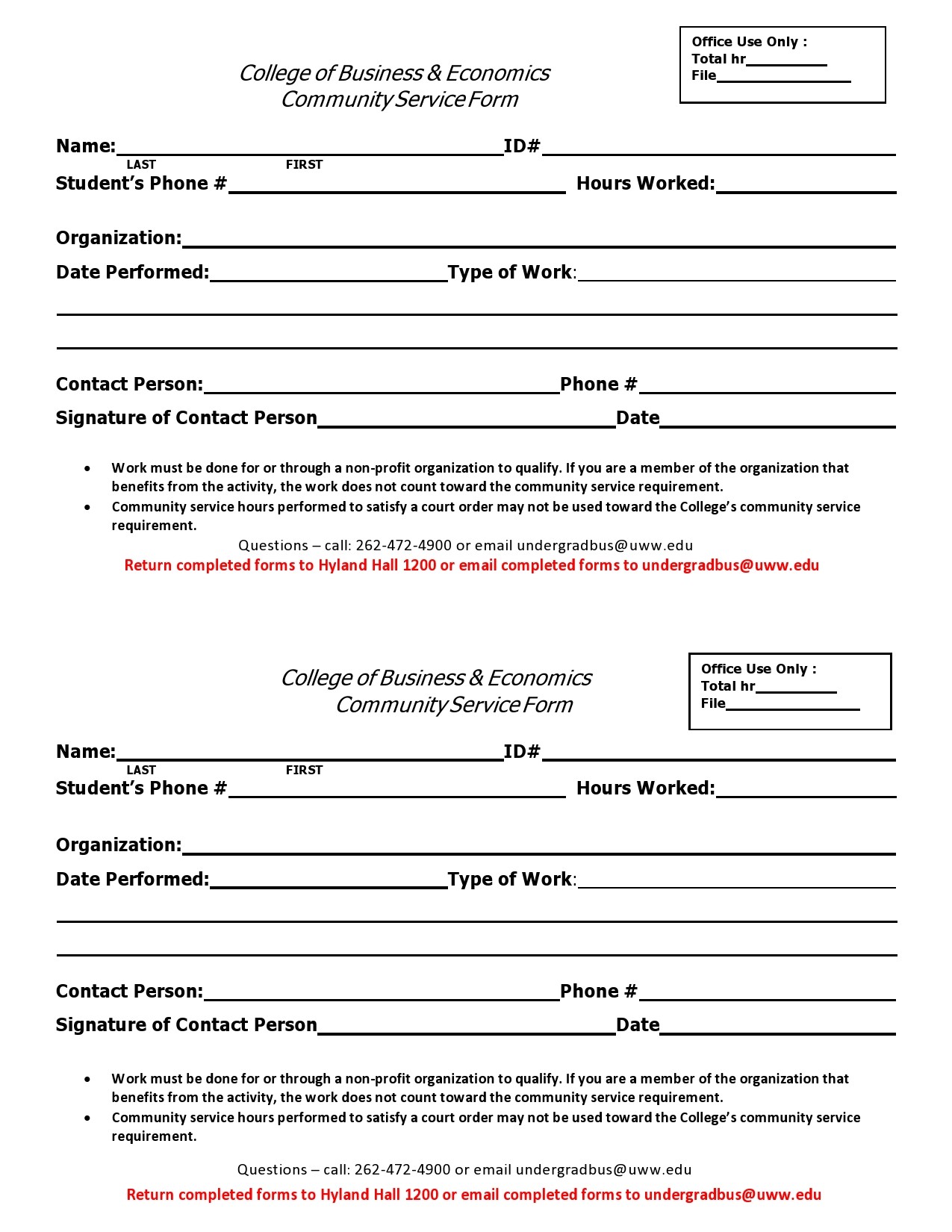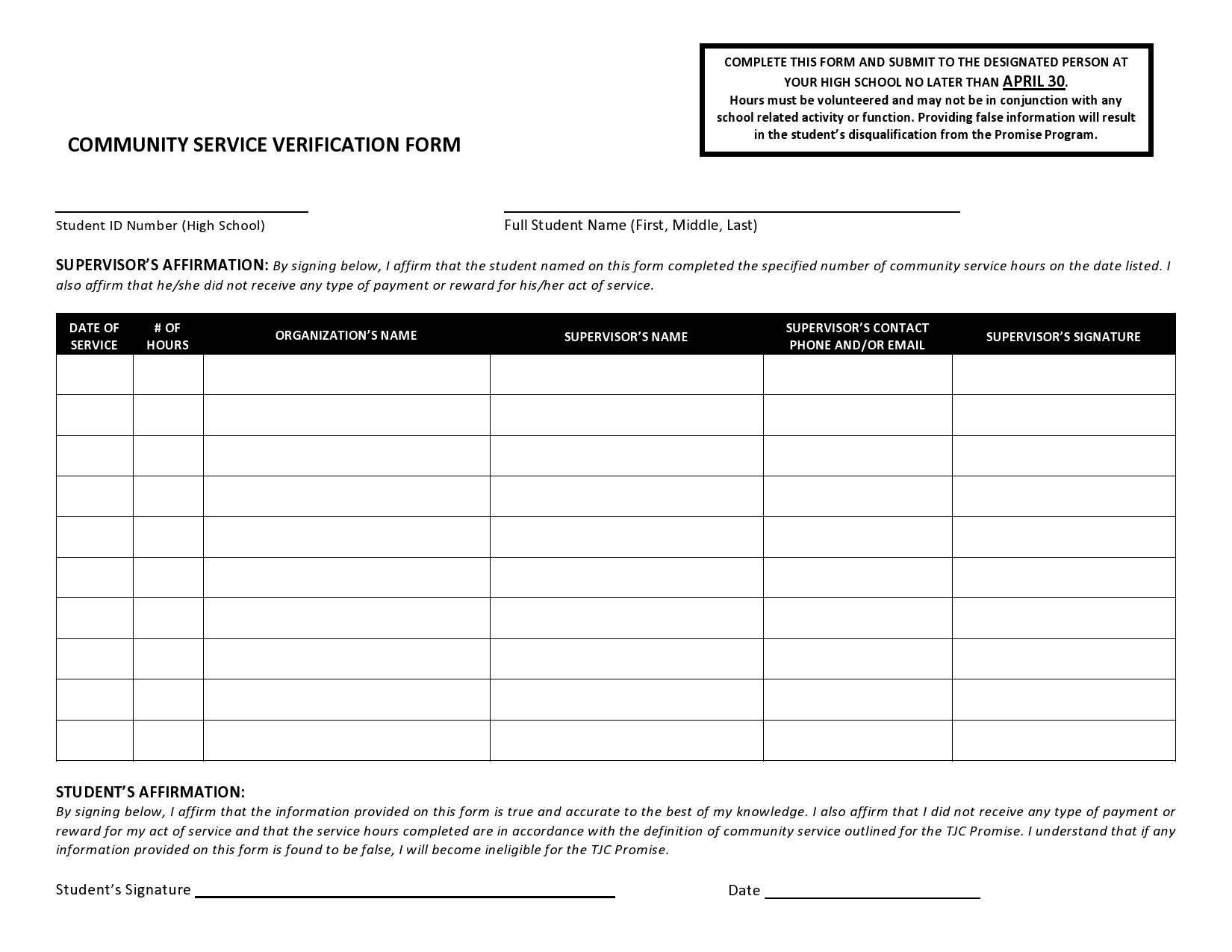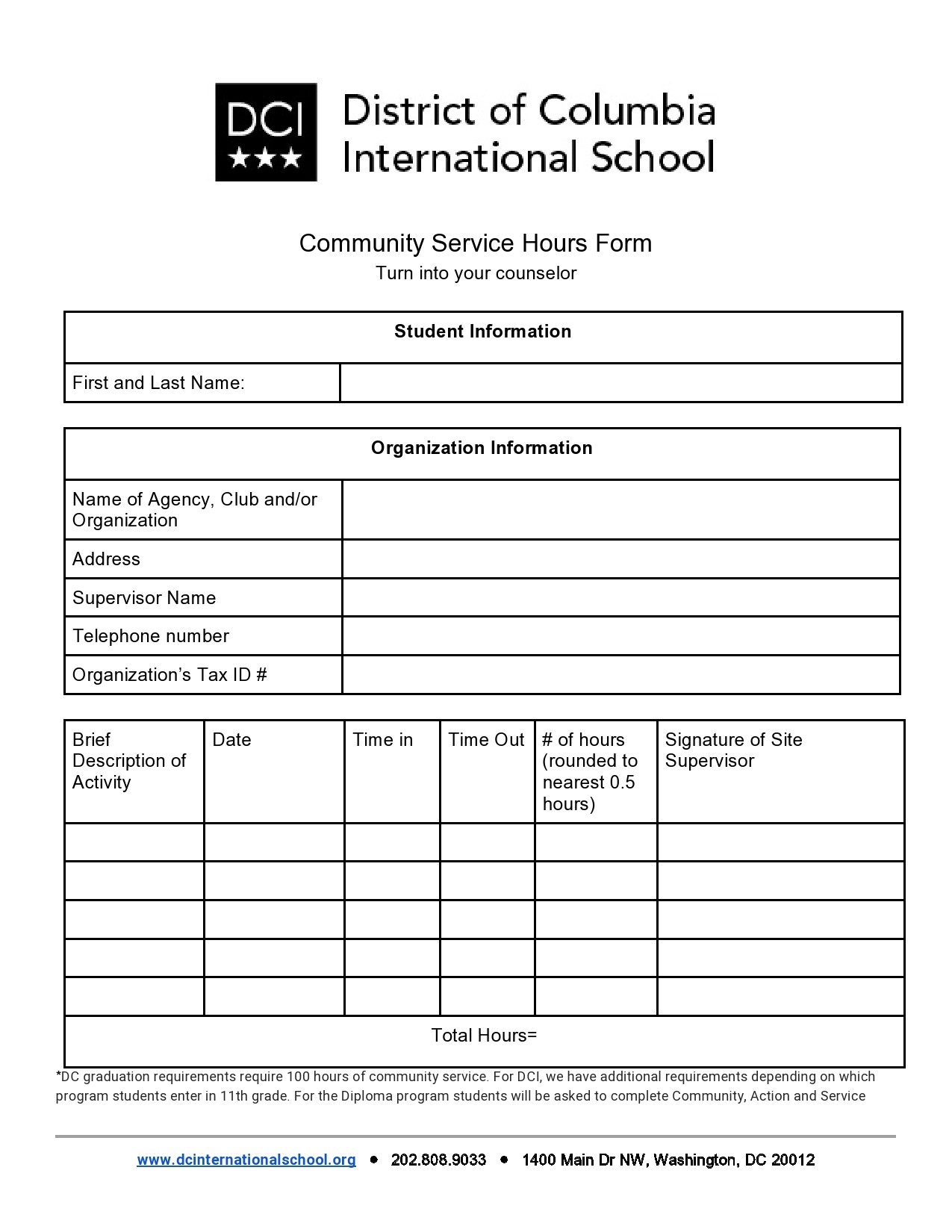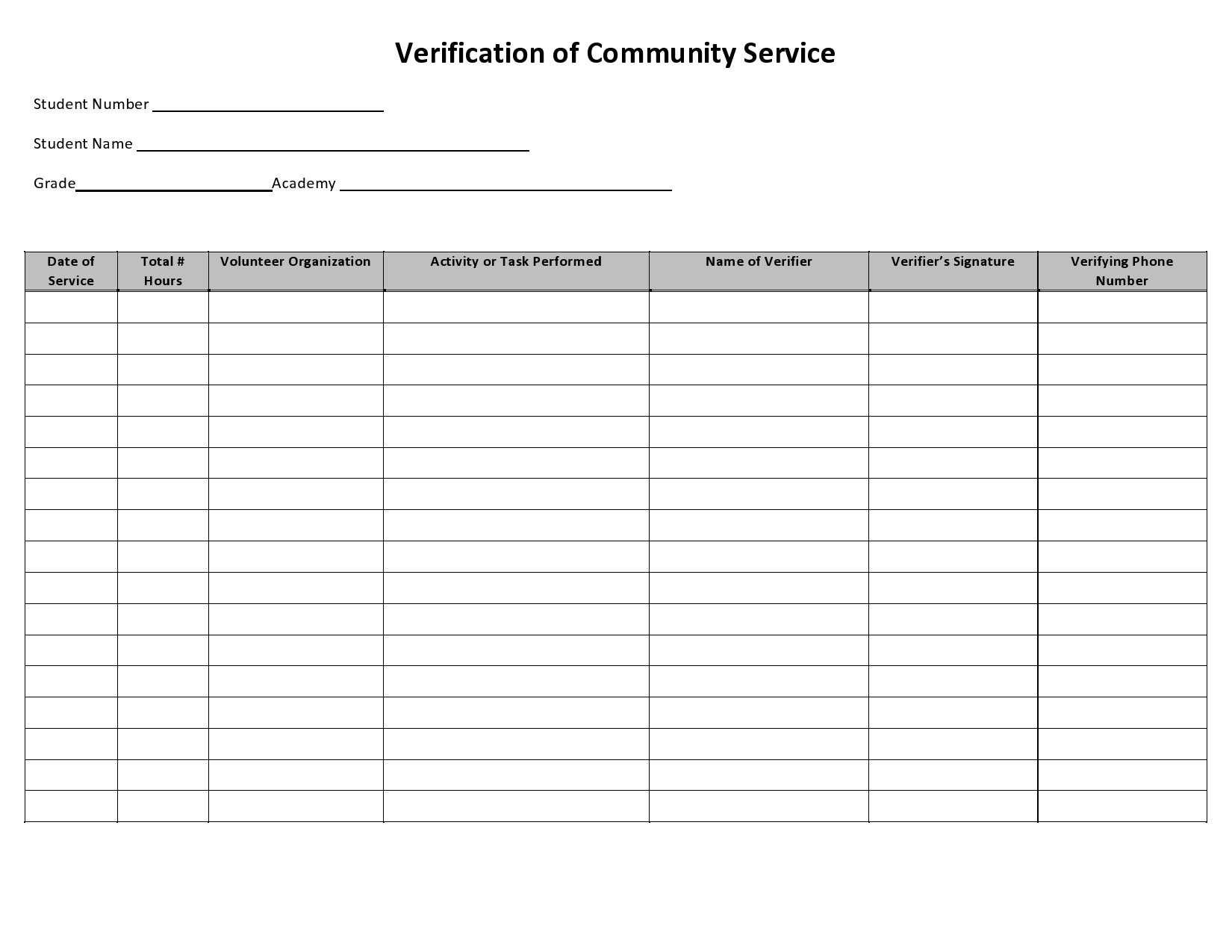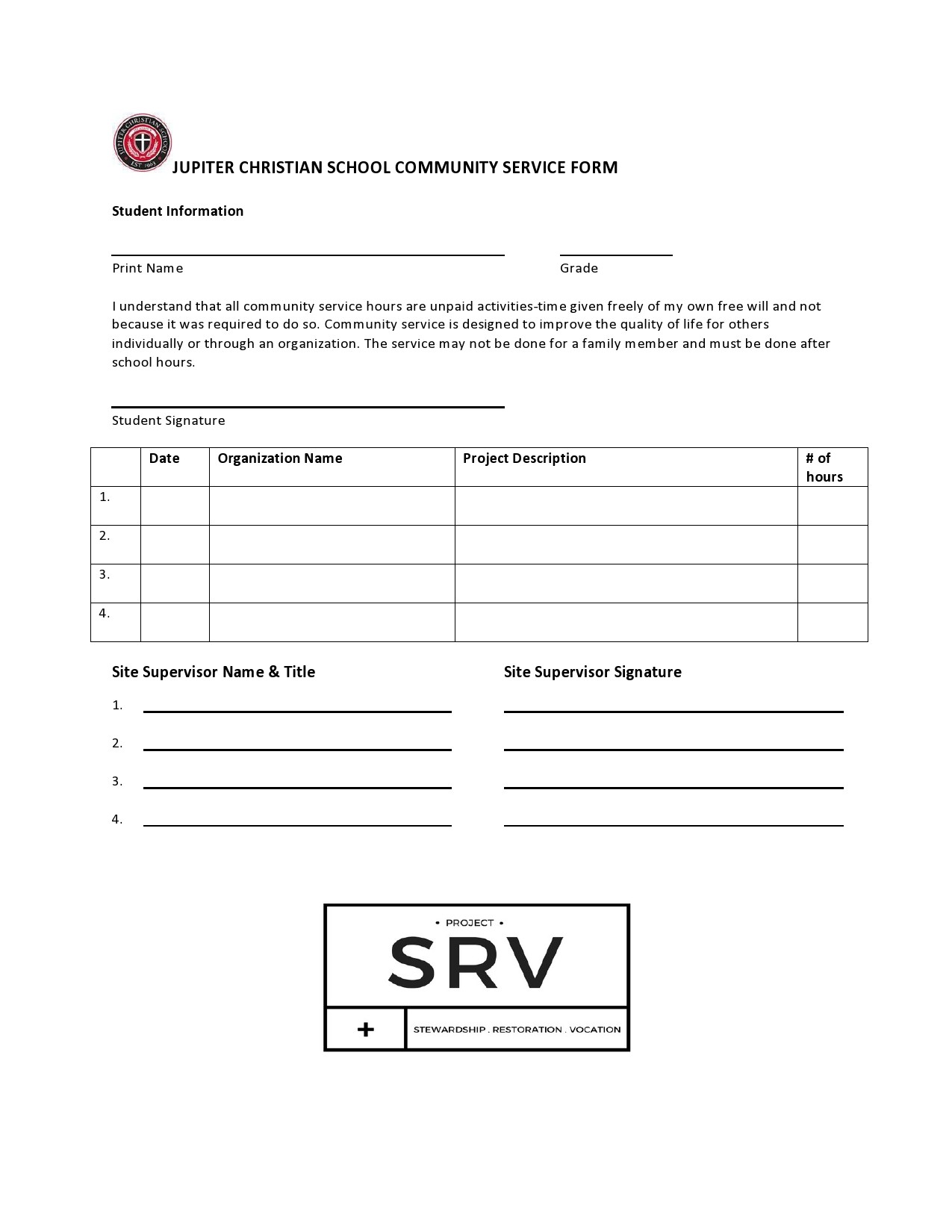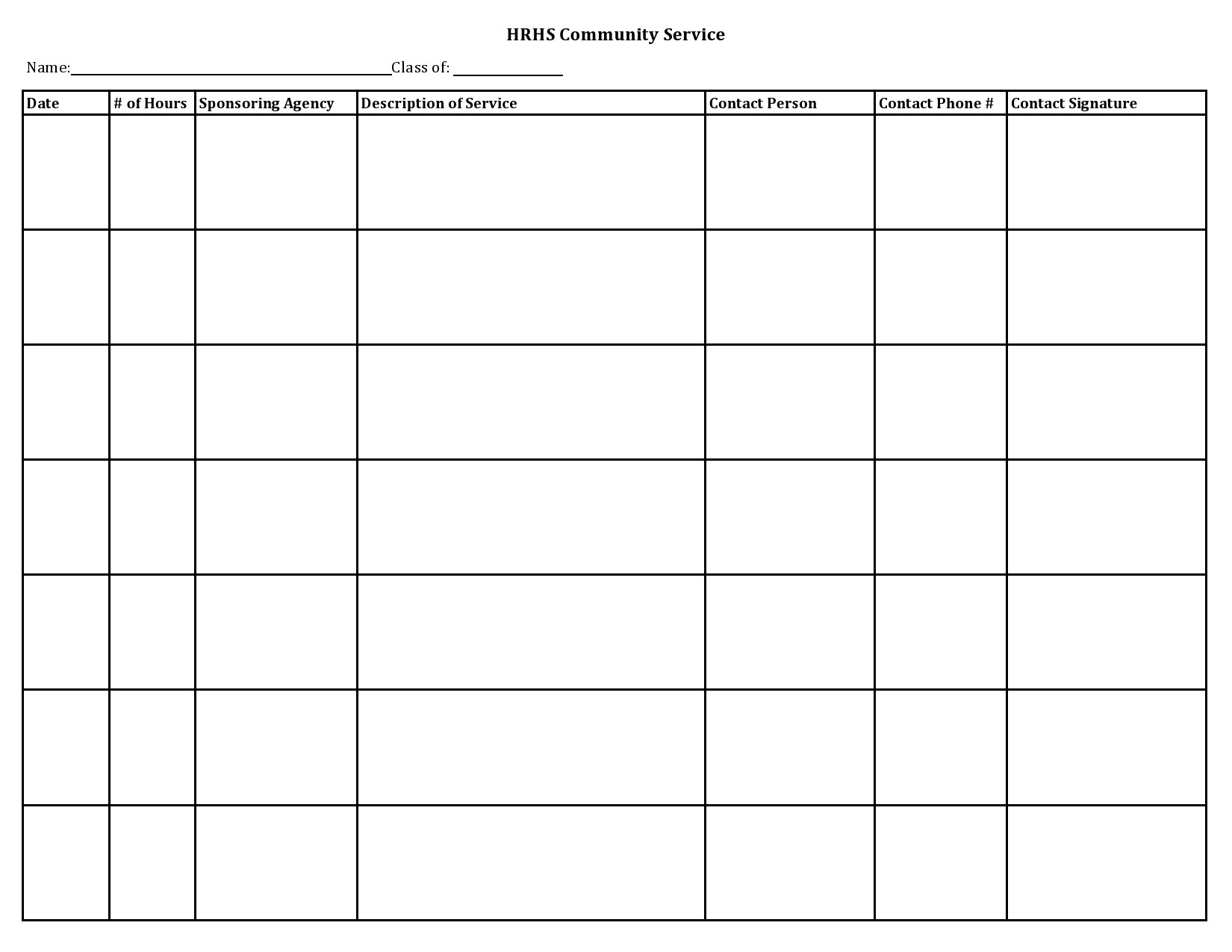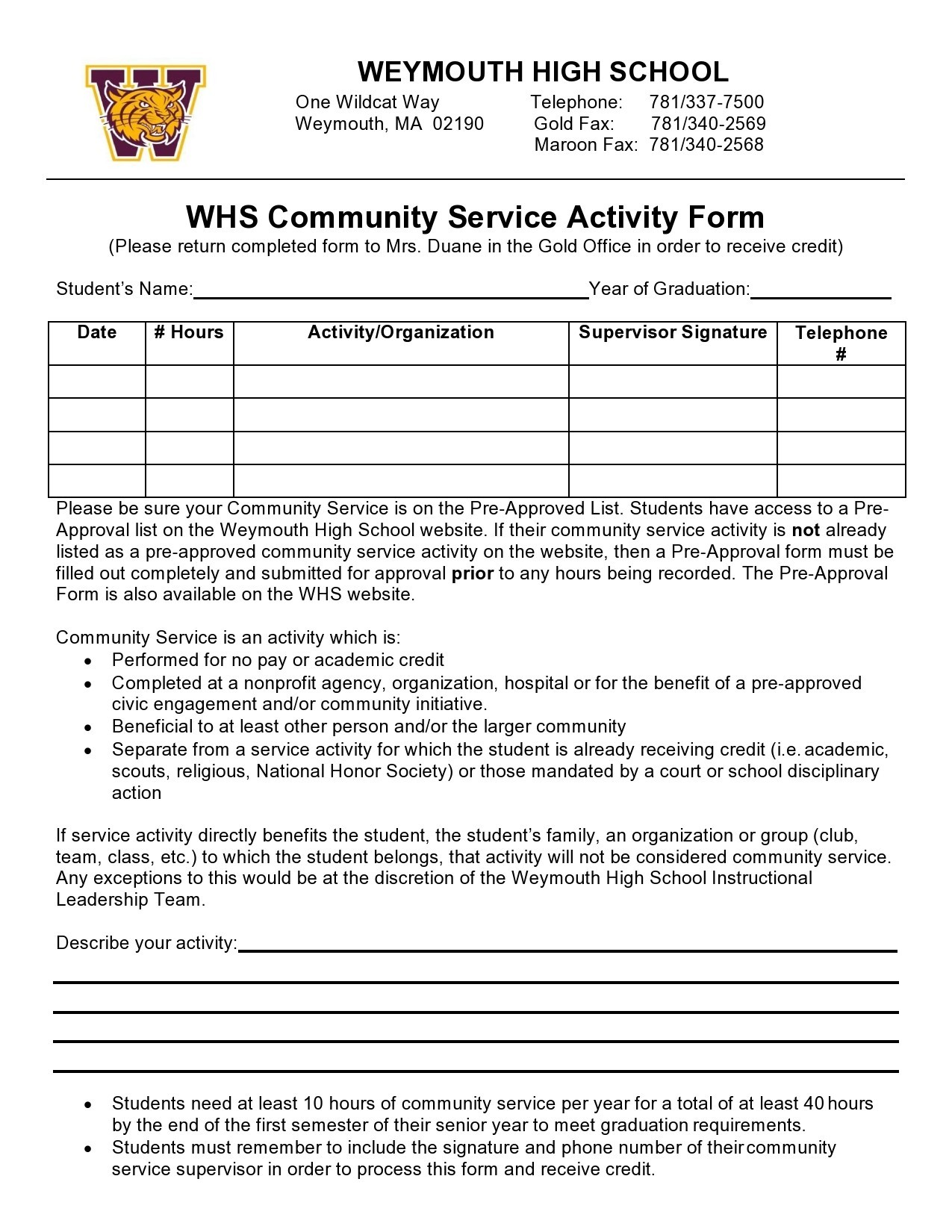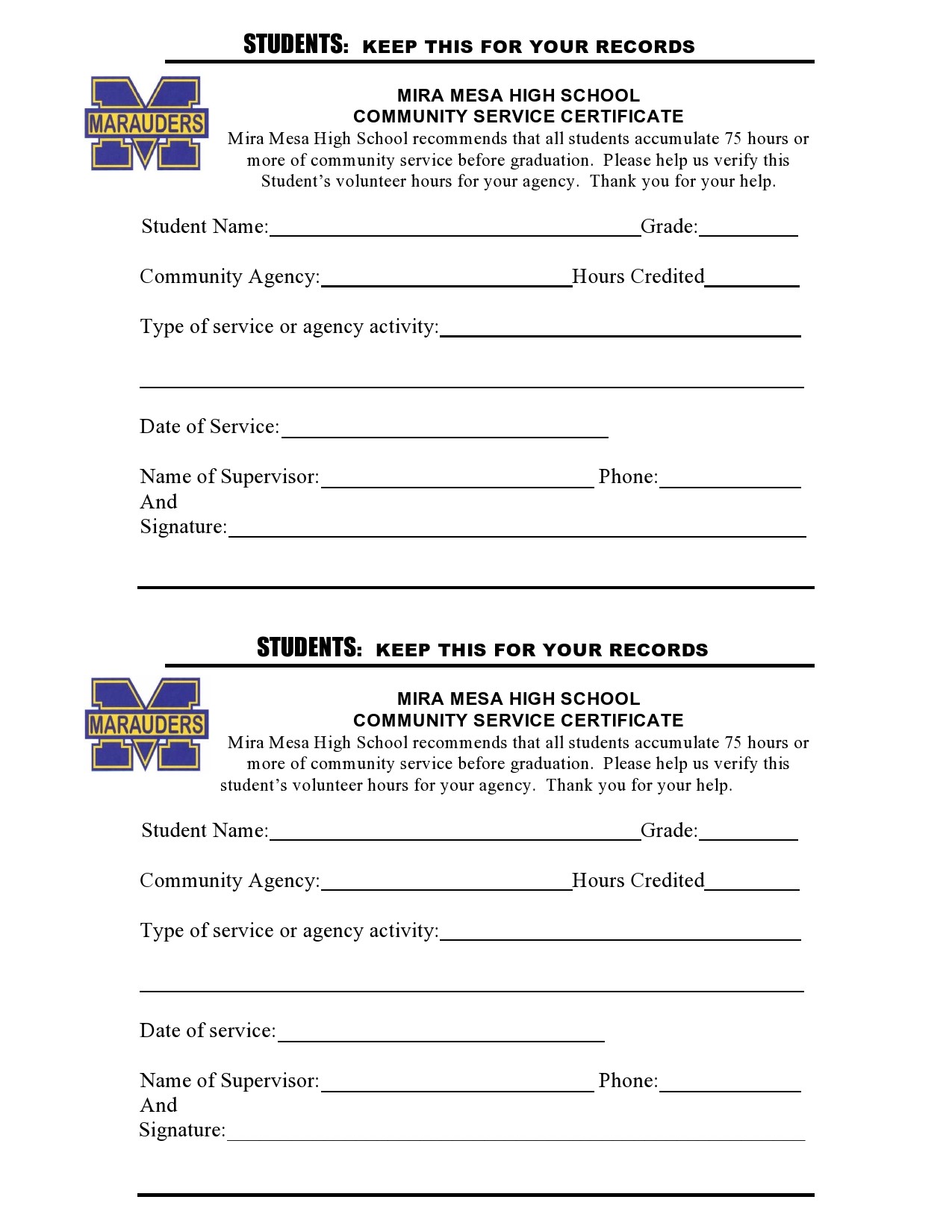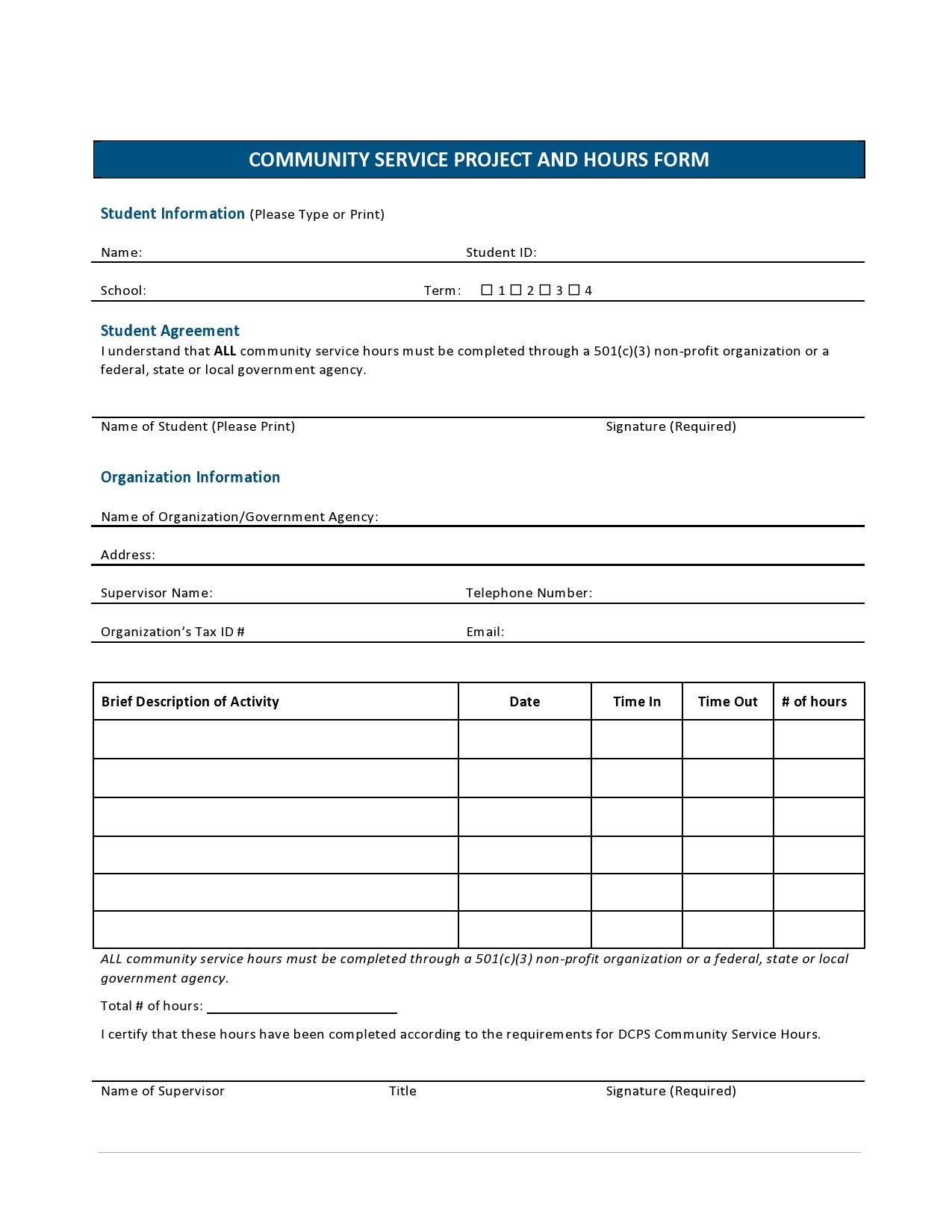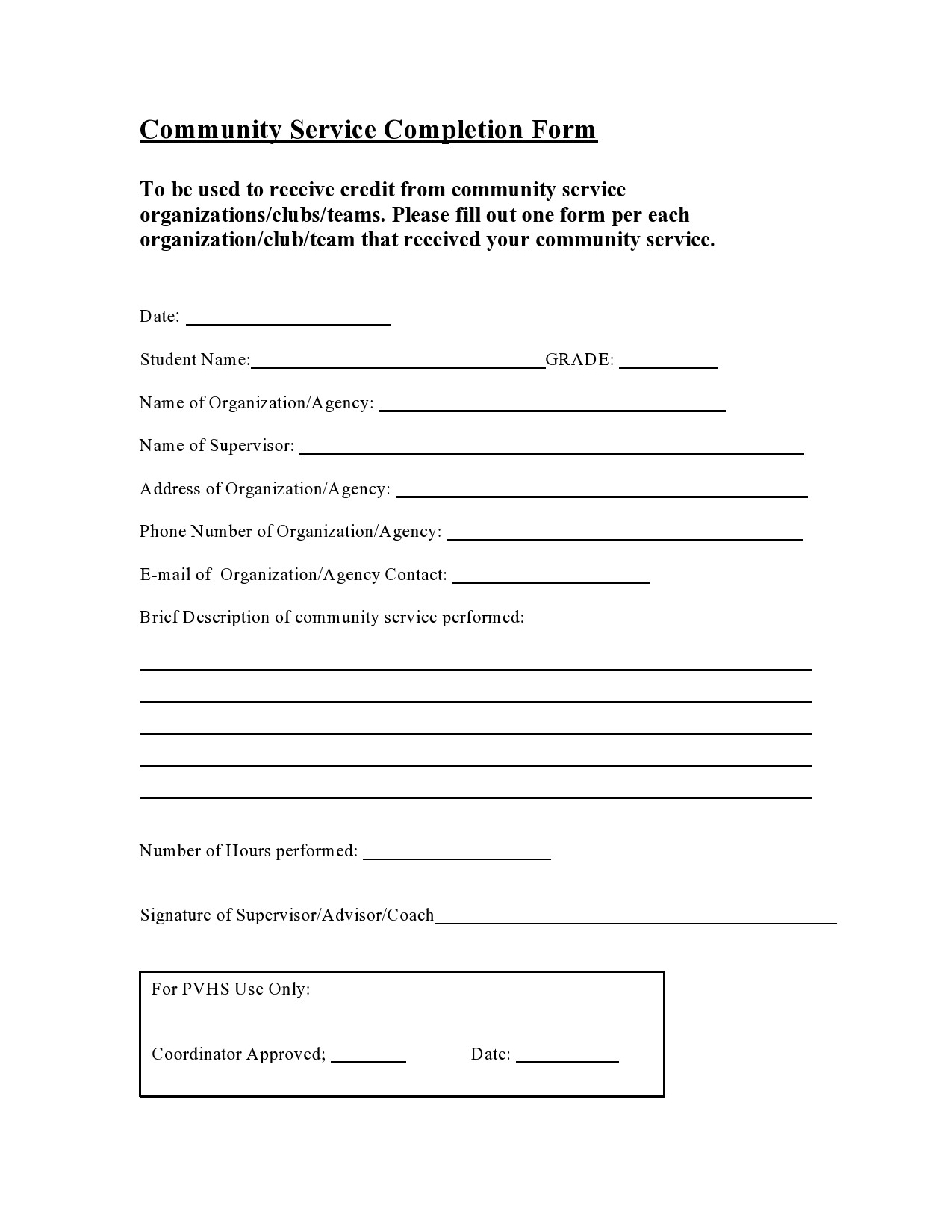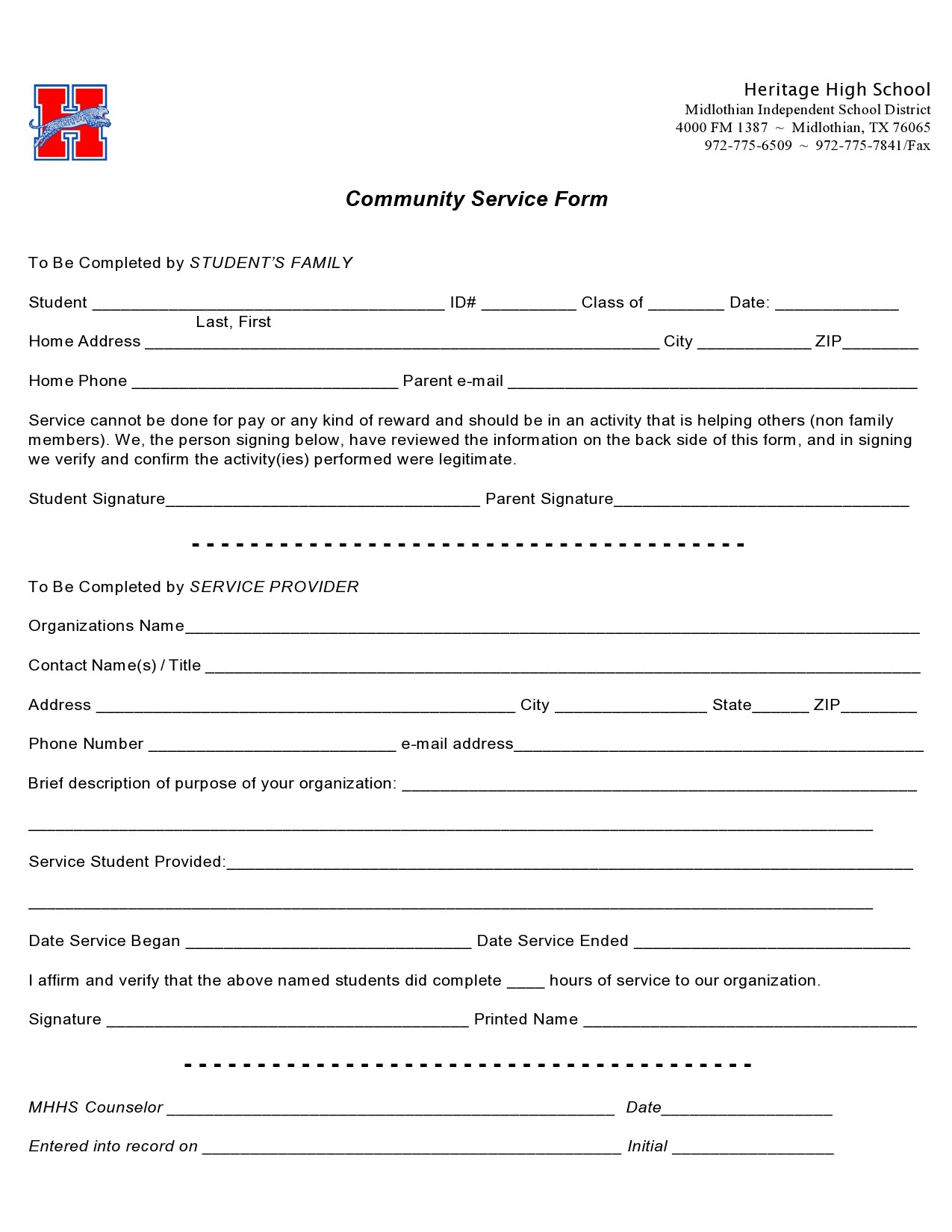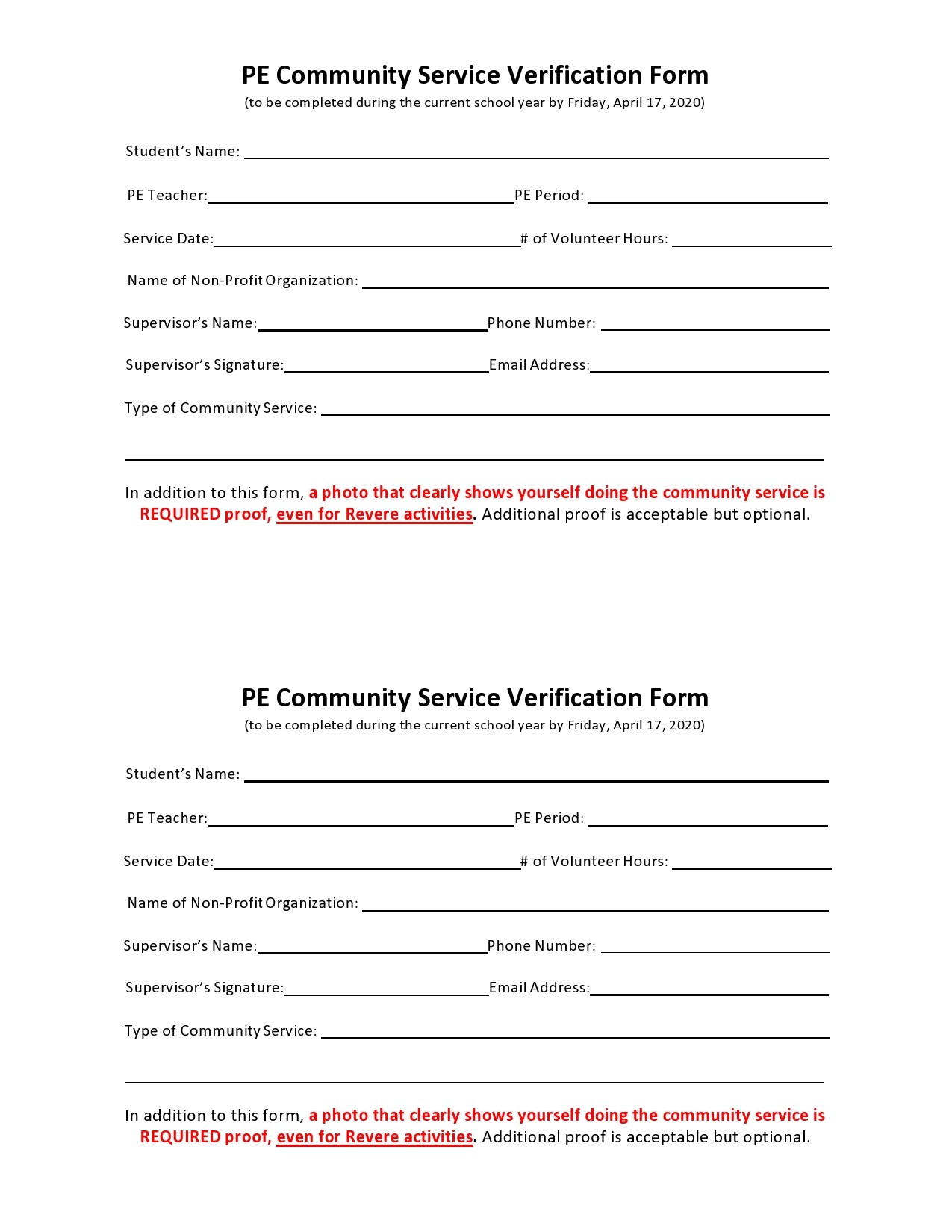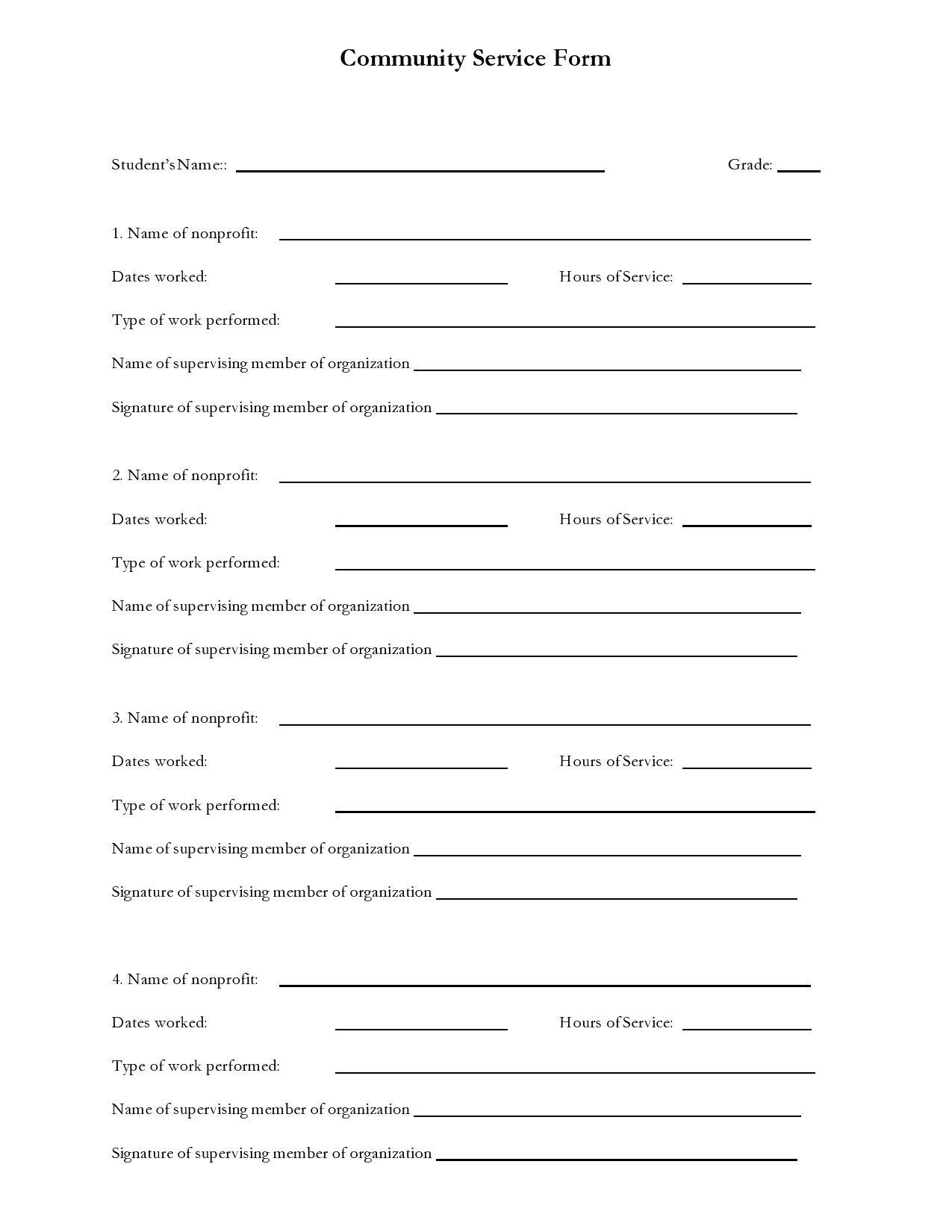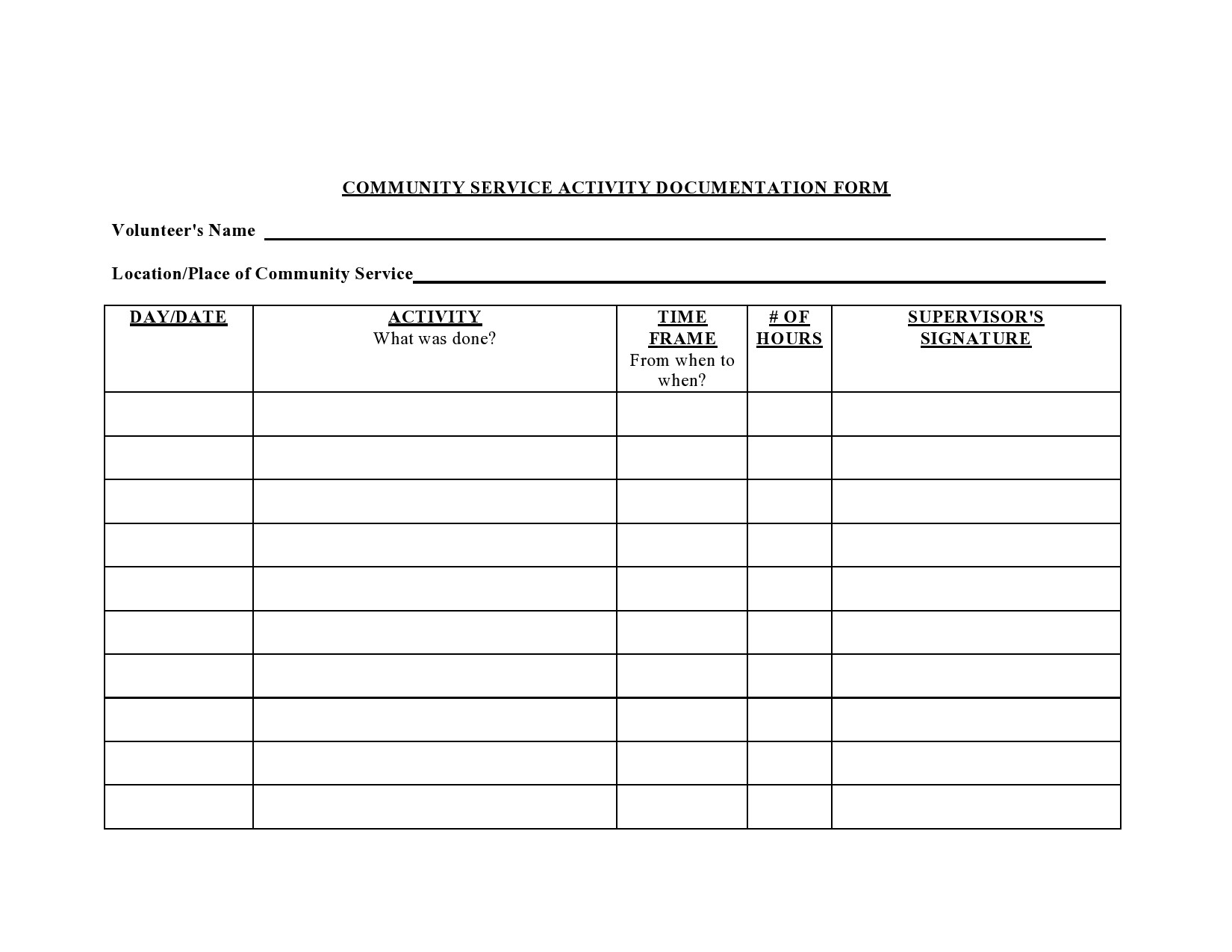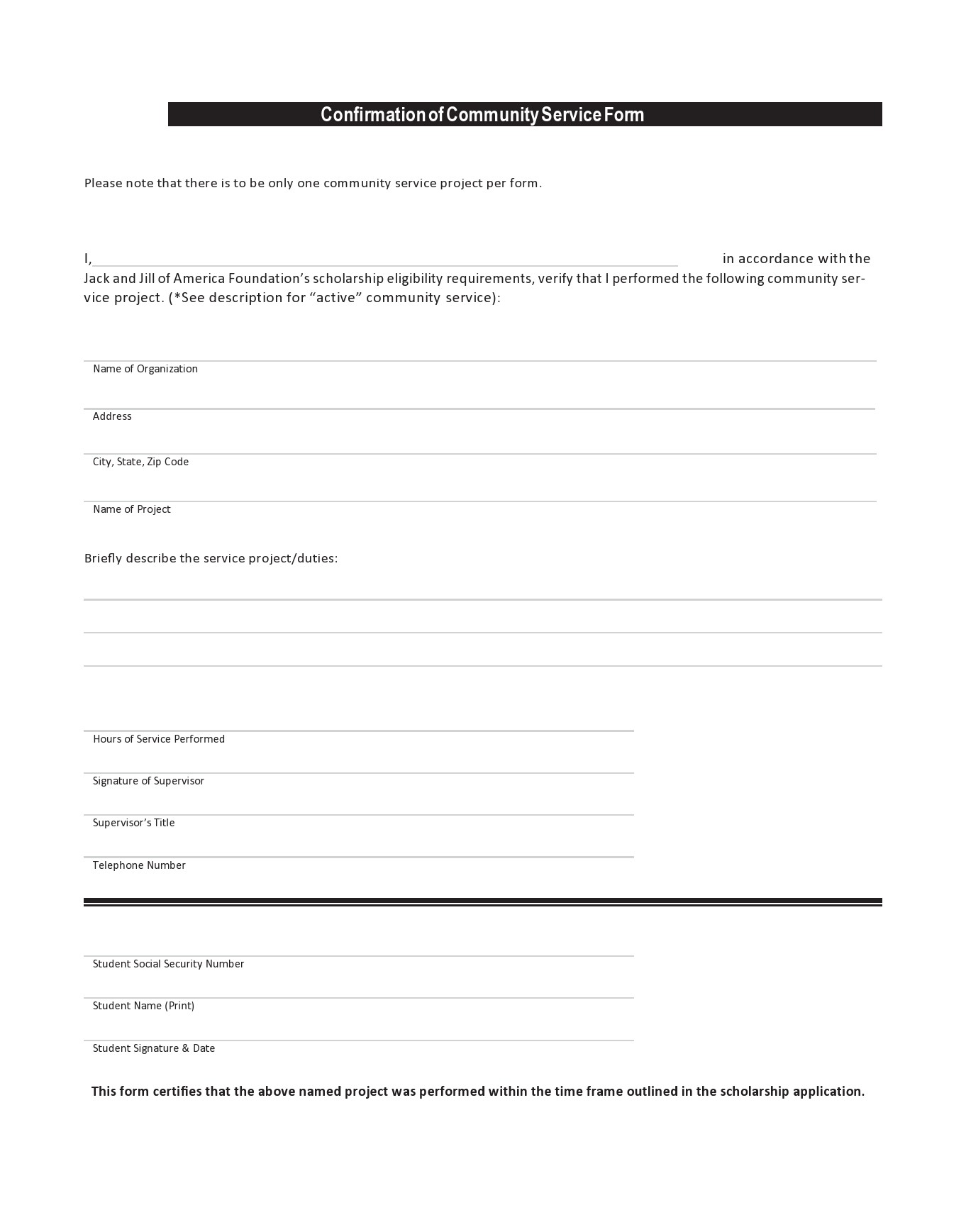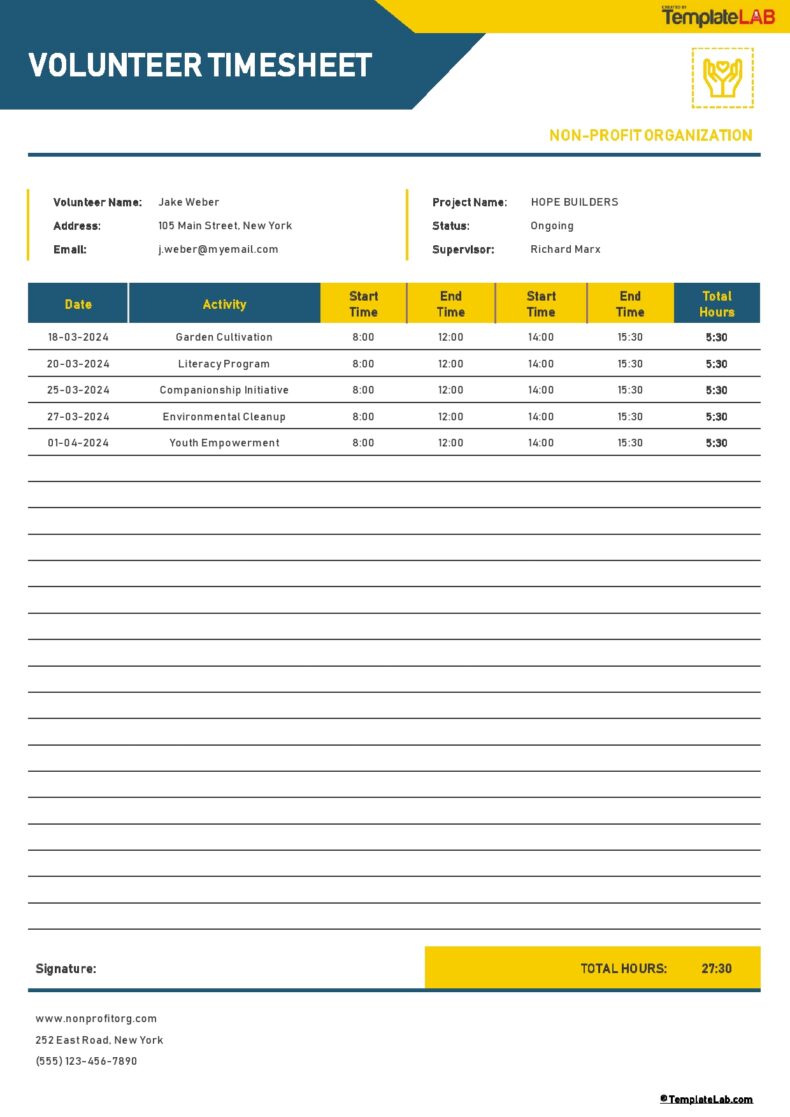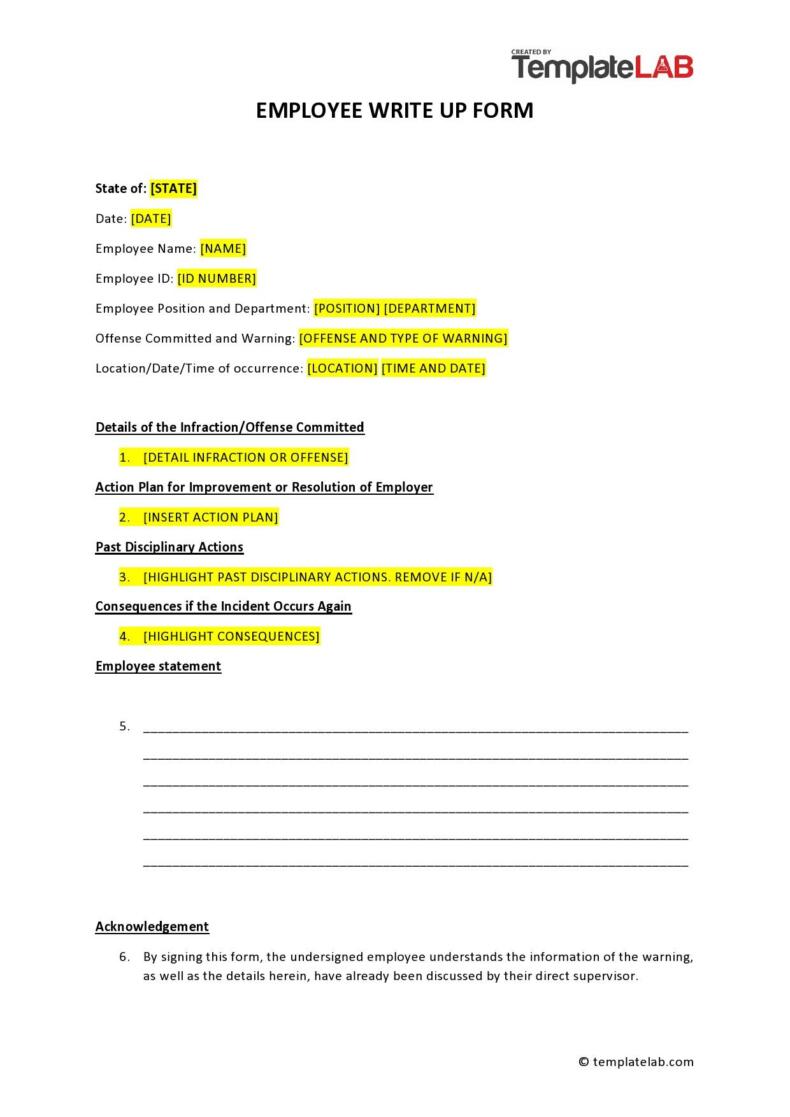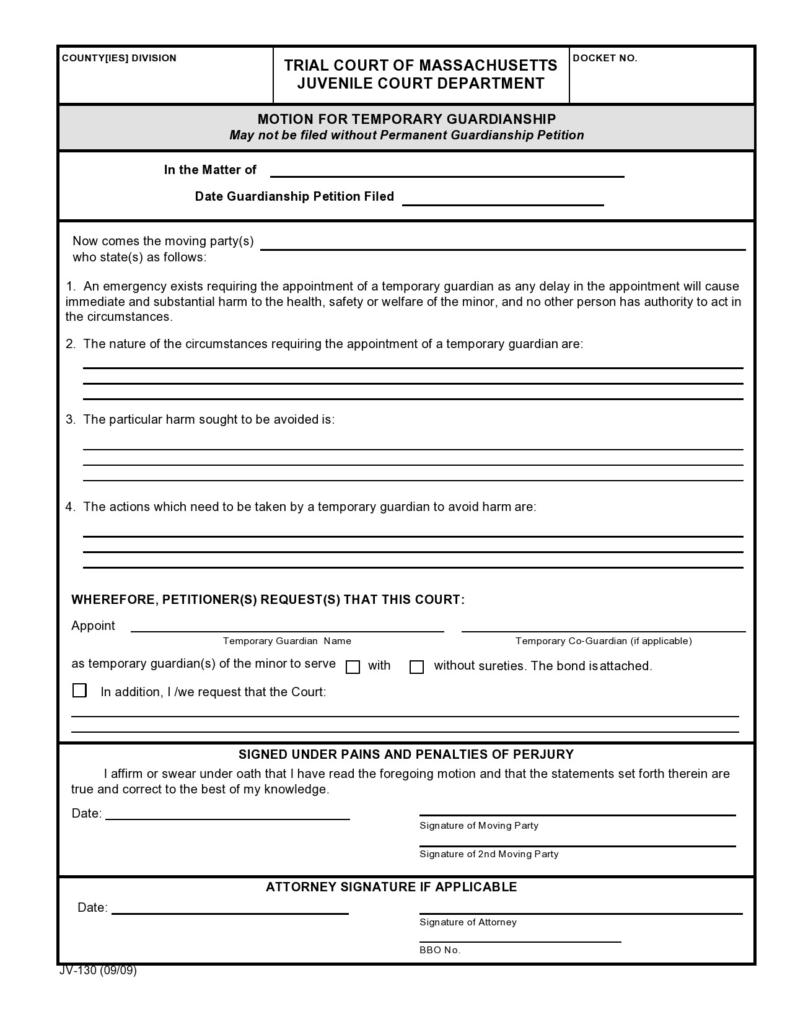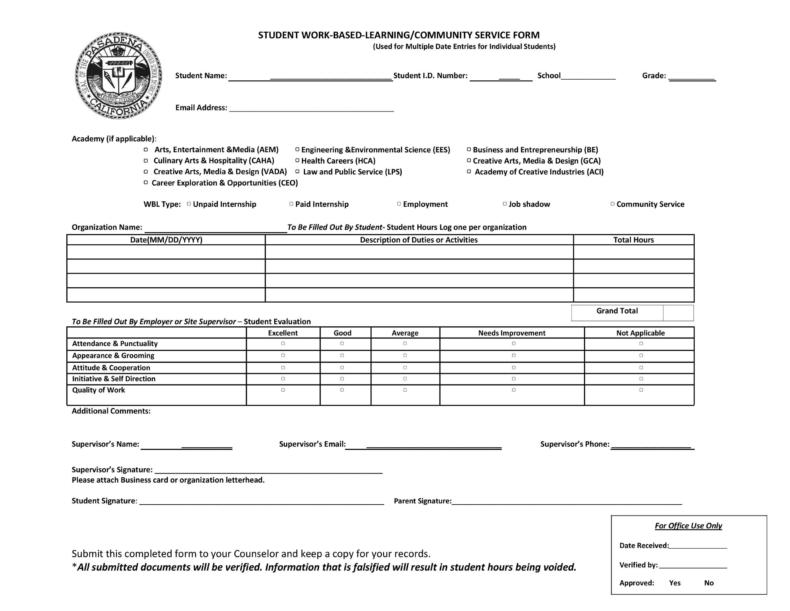Community service is an important part of contributing to the wider community, bringing people together to make improvements in the local area. Engaging in community service not only helps us make a positive impact on others’ lives but also provides personal growth and fulfillment.
To ensure that community service efforts are well-documented, organizations must prepare a community service form for participants to complete. In this article, we will explore what a community service form is, what information it contains, the benefits of using one, and how to create your community service form. You can also download one of our community service form templates to save you time and easily document the time spent giving back to the community.
Table of Contents
- 1 Community Service Forms
- 2 What is a Community Service Form?
- 3 Community Service Form Templates
- 4 When to Use a Community Service Form
- 5 Community Service Hour Forms
- 6 What’s Included in a Community Service Form?
- 7 Benefits of Using a Community Service Form
- 8 Community Service Form Samples
- 9 How to Create a Community Service Form
- 10 Community Service Form Examples
Community Service Forms
What is a Community Service Form?
A community service form is a document that serves as proof of participation in volunteering activities. It allows organizations to track the time spent volunteering and record the hours contributed by individuals or groups. A community service form is filled out by participants after completing their volunteer service and provides essential details such as the nature of the service, the hours spent completing the service, and the organization for which the community services were performed.
Additionally, a community service form may include personal information, contact information, and signatures of both the participant and a representative from the organization.
Community Service Form Templates
When to Use a Community Service Form
A community service form comes into play in various situations, from school requirements to court-ordered mandates. Let’s take a closer look at some common scenarios in which these forms are utilized:
- School and College Applications
Many educational institutions value community service and consider it a positive factor in evaluating applicants. College admissions look positively on students that take time to reach out to organizations and get involved in community service. High school students can use community service forms in the future to provide evidence of their volunteer work in their resume and college applications, demonstrating their commitment to their community. - Scholarship Applications
Several scholarships require each individual to show their participation in community service activities. To receive a scholarship, students should prepare by having evidence of community service in their application. Completing a community service form helps candidates showcase their dedication and increases their chances of receiving financial support. - Court-Ordered Mandates
In some cases, individuals may be required by the court to complete community service hours as part of their sentencing. Community service forms provide the necessary documentation for the court to track and verify the hours spent completing the required services. - Organization or Program Requirements
Some organizations, such as nonprofits or community clubs, may have specific requirements for members to fulfill community service hours. Submitting a community service form allows for accurate tracking and management of these obligations.
Community Service Hour Forms
What’s Included in a Community Service Form?
While the exact contents of a community service form can vary depending on the organization or institution, there are several key elements that are essential to document throughout this process:
- Personal Information: Community service forms usually require basic personal details such as name, date of birth, address, phone number, and email address. This information helps the organization identify and contact the volunteer if necessary.
- Organization Information: The form should include the name, address, and contact details of the organization where the community service was performed. This enables easy verification and ensures the recipient of the completed form can contact the organization directly if needed.
- Service Description: Participants should provide a clear and concise description of the community service activities they engaged in. This could include their role or responsibility during the service, the tasks performed, and the overall purpose or goal of the community service project.
- Hours and Dates: Volunteers must accurately record the time spent completing their service, including a specific start and end date. Logging the hours spent volunteering is vital for tracking purposes and verifying the completion of required service hours.
- Verification and Signatures: A community service form typically includes designated areas for both the participant’s and the organization’s authorized representative’s signature. This ensures accountability and authenticity. Additionally, some organizations may require an official sign-off from a supervisor or person in authority within the organization.
Benefits of Using a Community Service Form
- Documentation
One of the main benefits of completing a community service form is having a documented account of services completed. This provides evidence of your involvement in community service activities and can be useful when applying for scholarships, jobs, or other opportunities where volunteer experience is valued. - Credibility and Transparency
By utilizing a community service form, organizations can maintain transparency and credibility. Having accurate records of community service hours ensures that participants receive recognition for their service and that organizations have an accurate overview of their volunteer programs. - Time Management and Planning
Community service forms enable organizations to plan and schedule activities more effectively. With access to accurate information about volunteers’ availability and past service records, organizations can ensure their service projects are adequately staffed and efficiently managed. - Tracking Fulfillment of Obligations
In situations where community service is mandated, such as court-ordered programs or club requirements, community service forms help ensure participants complete their designated hours. Organizations can track and monitor progress, ensuring that all participants fulfill their obligations satisfactorily. - Recognition and Awards
Some organizations or institutions provide recognition or awards for an individual or a group who complete a significant number of community service hours. Community service forms play a vital role in establishing eligibility and determining recipients of these accolades.
Community Service Form Samples
How to Create a Community Service Form
There are many examples of community service forms that you can refer to in order to design your own community service form. However, you can easily download and print a free community service form to help save time throughout this process.
If you wish to create your own community service form, then we’ve outlined the steps below so you can easily document and verify any community service that is completed, whether for a student or for legal purposes.
- Determine the Purpose and Audience
Before you begin designing your community service form, it’s important to determine its purpose and identify the target audience. Consider why you need the form and who will be filling it out. Understanding the purpose helps you structure the form in a way that collects the required information and meets your organization’s or institution’s needs.
For example, if you are creating a community service form for a scholarship application, you may want to include specific fields related to the scholarship requirements, such as the number of hours completed, the dates of service, and the organization for which the service was performed. On the other hand, if you are creating a form for a court-ordered mandate, you may need to include fields for the participant’s case number and the court’s contact information. - Choose a Format
Once you have determined the purpose and audience of your community service form, you can select a format that suits your needs. Traditionally, community service forms were paper-based, requiring individuals to fill them out manually. However, with advancements in technology, electronic forms have become increasingly popular.
If you opt for an electronic community service form, you can use online platforms such as Microsoft Word, Google Forms, or Adobe Acrobat. Electronic forms offer the advantage of easy distribution, data collection, and organization. Participants can submit their completed forms via email or online submission platforms, eliminating the need for manual paperwork. - Outline the Sections and Information Required
To ensure your community service form collects all the necessary information, divide it into sections so that the organization or individual can enter key information easily. Sections should include personal information, along with the reason the participants must serve community service, if it is for legal reasons, as well as how many hours were spent completing community service. There must also be space for the organization to authorize and verify the community service and sign the document accordingly. - Design the Form
Once you have outlined the sections and information required, it’s time to design the community service form. Aim for a clean and professional layout that is visually appealing and easy to navigate.
Consider the following design elements:
Clear Headings: Use headings to clearly label each section of the community service form. This helps participants understand where to fill in their information, making the form more user-friendly.
Legible Fonts: Avoid using decorative fonts that may be difficult to read or could look unprofessional.
Ample Space: Leave enough blank space for participants to comfortably fill in their details. Crowded forms can be overwhelming and may lead to mistakes or omissions.
Branding: If applicable, include the organization’s logo or relevant branding elements on the form. This helps reinforce the connection between the community service and the organization.
Colors: Use colors sparingly and strategically. Stick to a limited color palette that aligns with the organization’s branding, but avoid overwhelming participants with an excessive use of colors.
It’s important to strike a balance between an aesthetically pleasing community service form and one that is functional and easy to complete. Avoid cluttering the community service form with unnecessary design elements that may distract participants from providing accurate and complete information. - Add an Authorization Section
To ensure the authenticity of the community service form, it is essential to include a section for signatures. This section should provide space for both the participant and the authorized representative of the organization to sign and date the form. Depending on the requirements, you may also include a separate section for a supervisor or person in authority within the organization to sign off on the completed service.
By including an authorization section, you create a built-in verification process that adds credibility to the form and the information provided. It also helps avoid any potential misunderstandings or disputes regarding the completion of community service hours. - Review and Revision
Before finalizing the community service form, review it carefully for any errors or missing information. Make sure that all fields are clear and unambiguous, and that the form is easy to complete. Consider seeking feedback from others, such as colleagues or members of your organization, to ensure that the form meets the desired requirements and is easy for participants to navigate and fill out.
Pay attention to the organization and structure of the community service form. Double-check that all the necessary fields are included and that they are properly labeled. Consider the flow of information and ensure that it logically progresses throughout the form.
Additionally, check for inconsistencies, spelling errors, or grammatical mistakes. Poorly designed or error-riddled forms can create confusion and hinder the overall effectiveness of the community service documentation process. - Distribute and Collect
Once you are satisfied with the design and content of the community service form, it’s time to distribute it to participants. If using a paper-based form, print enough copies to distribute to individuals who need to complete them. Consider whether you also want to make the form available for download on your organization’s website or through other digital channels.
For electronic forms, determine the most efficient method of distribution. This may involve sending the form as an attachment in an email or sharing a link to an online form. Make sure to clearly communicate the instructions for completion and submission to participants.
Community Service Form Examples
A community service form is a valuable tool for recording and verifying volunteer work. It serves as proof of participation, allowing organizations, educational institutions, and other entities to acknowledge and validate an individual’s commitment to community service.
Creating a community service form is a straightforward process that can be customized to suit the specific requirements of your organization or institution. By following a step-by-step approach, you can design a form that collects all the necessary information while being user-friendly and visually appealing.

